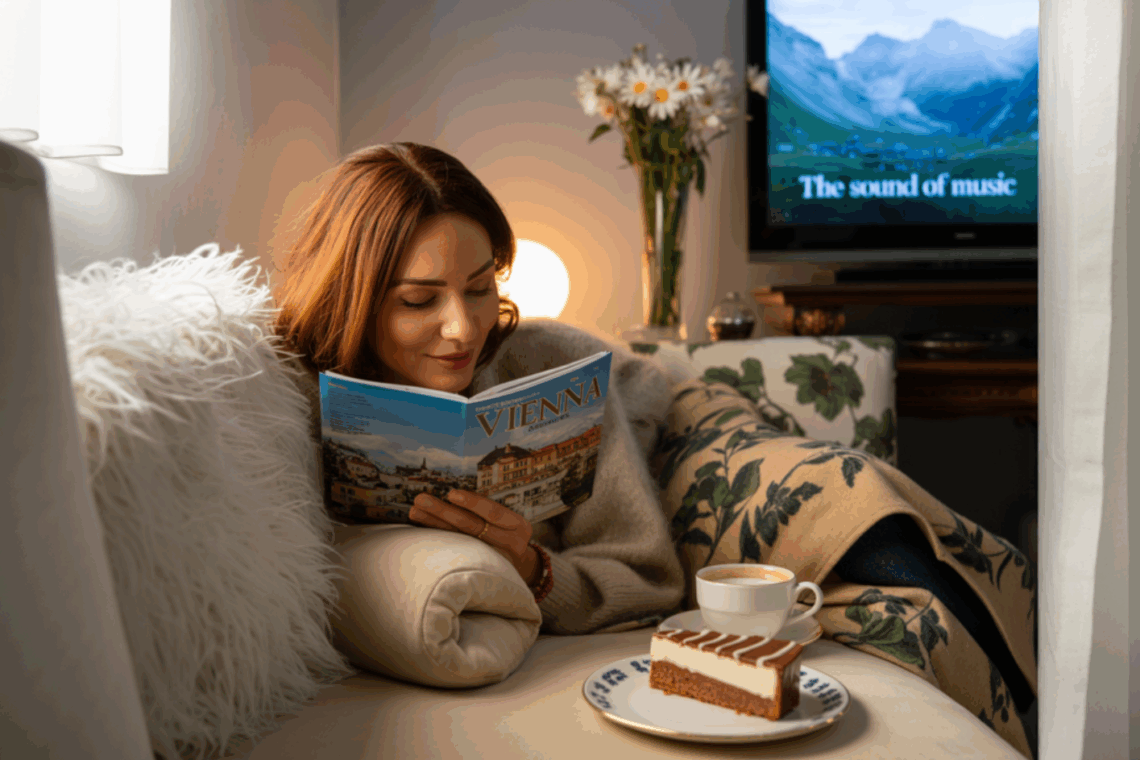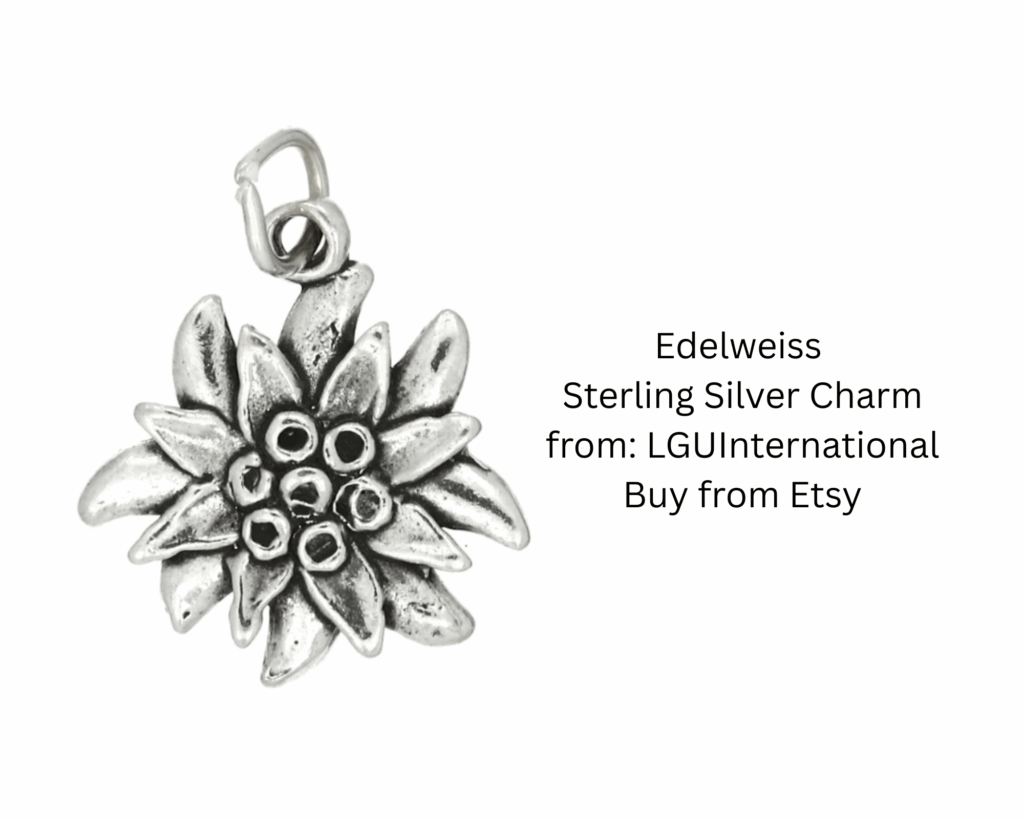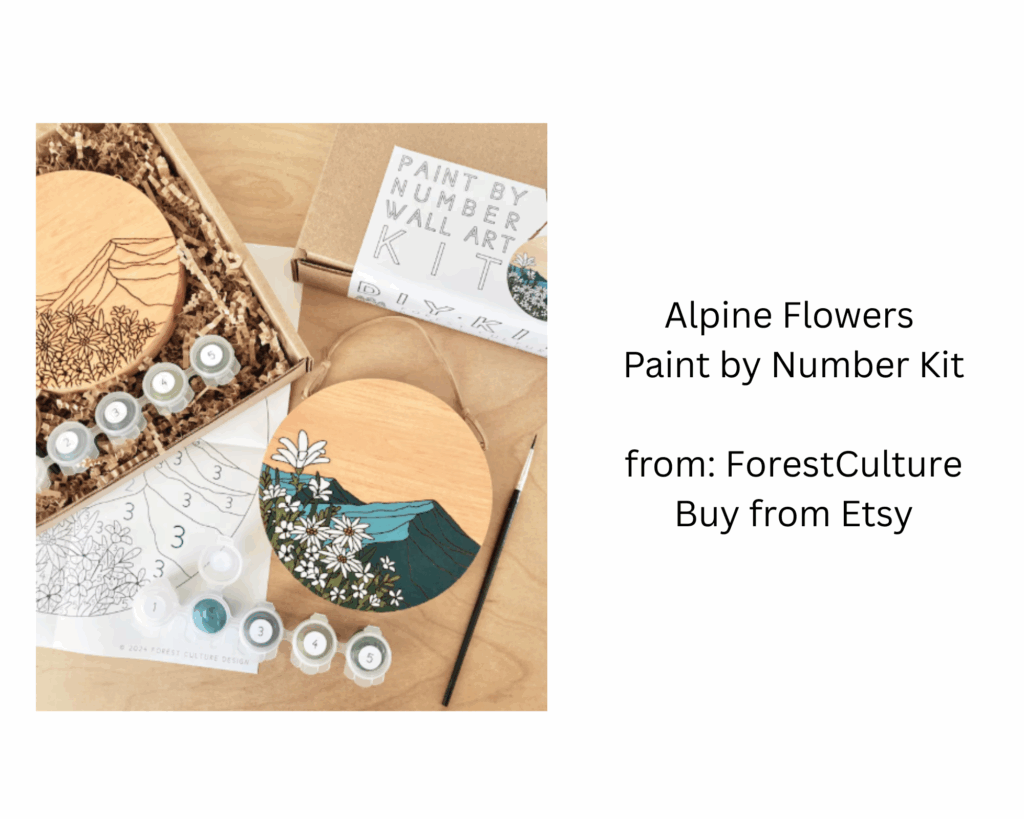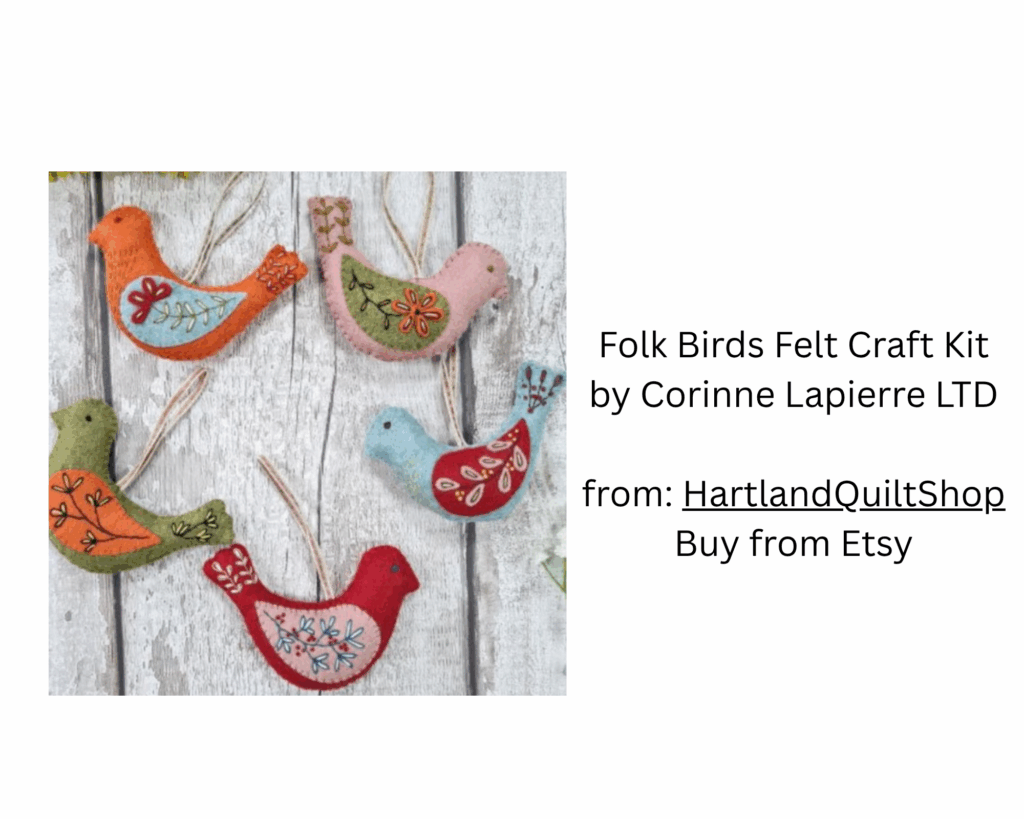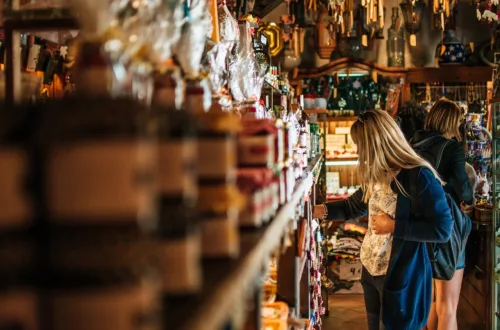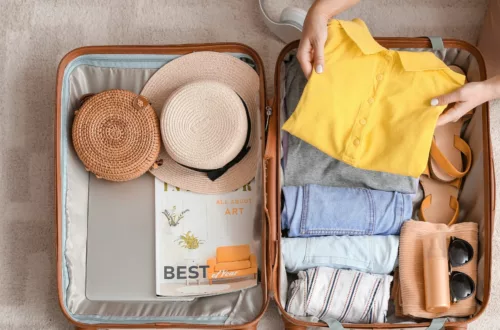Travel doesn’t have to start at the airport.
It can begin with a novel, a song, a recipe, or a flicker of curiosity — and sometimes, that quiet beginning becomes just as meaningful as the destination itself.
This post is an invitation to experience Austria more deeply. Whether you’re planning a summer trip (like I am) or simply dreaming from home, it offers a cultural deep dive — a way to wander through a country with your senses and imagination, long before you pack a bag.
What follows is a series of curated experiences — stories, sounds, tastes, and traditions — each one a doorway into Austrian life and culture. The list is long on purpose. It’s not a checklist; it’s a treasure trove. You might pick one thing from each section, or just follow whatever sparks something in you. These ideas are here to help you begin — and maybe even inspire your own ways of connecting with Austria. The goal isn’t to do it all — it’s to make it yours. Let these experiences deepen your connection to Austria in a way that feels rich, joyful, and true to you.
Heads up! This post contains affiliate links, which means I may earn a small commission if you make a purchase (at no extra cost to you). Your clicks help keep these posts going — for all the dreamers, travelers, and memory-makers out there.
Let the Journey Begin With a Story
Open a book, and suddenly you’re somewhere else entirely. Somewhere with coffeehouses and cobbled streets, royal secrets and quiet resistance. Somewhere called Austria.
We’re starting with stories because books are one of the richest ways to connect with a place. Through fiction and memoir, history and imagination, you’ll step into Austria across time and space — from royal courts to war-torn cities, mountain villages to literary cafés. You’ll meet characters who lived and loved here, and begin to feel what makes this place so layered and unforgettable.
Stories are my personal favorite place to begin.
The World of Yesterday
The World of Yesterday by Stefan Zweig (2013, original 1942)
Translated by: Anthea Bell
Genre: Memoir / Historical Reflection
Setting: Vienna and across Europe (early 20th century)
Goodreads Rating: ★★★★½ (4.5)
Buy on Amazon
✨ Why Read It:
This memoir by Austrian writer Stefan Zweig is a lyrical, moving elegy to the Vienna he knew — a city of art, music, intellectual debate, and cultural flourishing, written just as that world was unraveling under the weight of fascism. It’s part remembrance, part warning, and entirely unforgettable.
Zweig’s Vienna is not just a setting; it’s a character — one that lovers of The Grand Budapest Hotel or prewar Austria will find both dazzling and tragic. He captures what it meant to belong to a world that felt civilized and invincible — until it wasn’t.
This book offers a rare, first-person lens on Austria’s golden age and its collapse, making it an essential cultural companion for anyone exploring Austria from home or in person.
Sisi: Empress on Her Own
Sisi: Empress on Her Own by Allison Pataki (2017)
Genre: Historical Fiction
Setting: Vienna, Budapest, and across 19th-century Europe
Series: Book 2 in the Sisi duology
Goodreads Rating: ★★★★☆ (4.0)
Buy on Amazon
✨ Why Read It:
If you’re curious about Austria’s royal legacy, this novel brings one of its most famous figures to life in full color. Empress Elisabeth — Sisi — was known for her beauty and rebellious spirit, but Pataki’s novel dives deeper, exploring her emotional life, her political influence, and the gilded prison of her marriage to Emperor Franz Joseph.
Set in the grand palaces and countryside estates of the Austro-Hungarian Empire, this book offers readers a lush, dramatic glimpse into the Vienna of waltzes, scandals, and whispered court intrigues. For anyone who wants to feel the emotional weight behind the portraits at Schönbrunn Palace, this novel delivers.
It pairs beautifully with a visit (or daydream) to Vienna — or as a complement to any Austria-at-home weekend.
The Edelweiss Sisters
The Edelweiss Sisters by Kate Hewitt (2021)
Genre: World War II Historical Fiction
Setting: Salzburg, Austria (1938 onward)
Goodreads Rating: ★★★★½ (4.5)
Series: Part of the Totally Heartbreaking WW2 Novels
Buy on Amazon
✨ Why Read It:
For readers who want to feel deeply connected to Austria’s World War II history — not just through politics, but through family, sacrifice, and resilience — this novel is a powerful experience. Set in Salzburg at the time of the Anschluss, it follows three sisters whose quiet lives unravel into acts of resistance, heartbreak, and impossible courage.
It blends place-based storytelling (Salzburg, Nonnberg Abbey, Mauthausen) with emotional depth and an intimate view of Austrian daily life before and during occupation. It’s a poignant reminder that even in the darkest times, love and loyalty can anchor us to hope.
Perfect for those who enjoyed The Nightingale or The Lilac Girls — and want to step into Austria’s version of that emotional terrain.
Night Angels
Night Angels by Weina Dai Randel (2023)
Genre: Historical Fiction / WWII
Setting: Vienna, Austria (1938)
Goodreads Rating: ★★★★☆ (4.2)
Inspired by: The true story of Dr. Ho Fengshan
Buy on Amazon
✨ Why Read It:
Night Angels offers a unique and profoundly moving perspective on Austria during the rise of Nazi power — seen through the eyes of a Chinese diplomat and his American wife. While Vienna braces under the weight of fascism, their quiet courage becomes a lifeline for Jewish families desperate to escape.
This novel stands out because it illuminates Austria’s role in a global story of resistance and humanity, and reminds readers that heroes often work quietly behind closed doors. For those interested in stories of moral bravery, cross-cultural friendship, and Austria’s Jewish history, this is a must-read.
The details of 1938 Vienna — the salons, the streets, the fear creeping in after Kristallnacht — are vividly drawn, making this book feel like a walk through history guided by two unlikely angels.
The Austrian Bride
The Austrian Bride by Helen Parusel (2024)
Genre: Historical Fiction / WWII
Setting: Linz, Austria (1938)
Goodreads Rating: ★★★★½ (4.4)
Buy on Amazon
✨ Why Read It:
Set in the city of Linz during the Anschluss, The Austrian Bride brings readers deep into the conflicted world of everyday Austrians navigating loyalty, love, and survival. When Ella joins a Reich Bride School — an elite training ground for future Nazi wives — as an act of resistance, she finds herself risking everything from within the regime’s inner circle.
What makes this book such a powerful read is its emphasis on female agency, moral awakening, and emotional courage. It’s a story not only of political resistance, but also of personal transformation, woven through a real historical setting with tension and care.
This novel will resonate deeply with those who love The Nightingale or Code Name Hélène, but want an Austrian perspective that includes nuance, inner conflict, and bravery in unlikely places.
The Lost Letter
The Lost Letter by Jillian Cantor (2018)
Genre: Historical Fiction / Dual Timeline
Setting: Austria (1938) & Los Angeles (1989)
Goodreads Rating: ★★★★☆ (4.2)
Buy on Amazon
✨ Why Read It:
If you’re drawn to stories where small, personal artifacts reveal big historical truths, this novel is for you. Set partly in 1938 Austria, it follows Kristoff — a young stamp engraver drawn into the resistance during the Nazi occupation — and partly in 1989 Los Angeles, where a woman uncovers a mysterious WWII-era Austrian stamp hidden in her father’s collection.
This book is a quiet, romantic, and moving reminder that Austria’s story didn’t just stay in Austria — it traveled through letters, memories, and generations. For readers who enjoy layered, time-spanning narratives that tie past to present, this will feel like opening a hidden drawer in history.
Pair this with a cup of Austrian coffee and a cozy corner — it’s ideal for a rainy-day read or an at-home cultural escape.
The Vienna Writers Circle
The Vienna Writers Circle by J.C. Maetis (2023)
Genre: Historical Fiction / WWII
Setting: Vienna, Austria (1938)
Goodreads Rating: ★★★★☆ (4.0)
Buy on Amazon
✨ Why Read It:
This novel invites readers into Vienna’s café culture and literary heart just as it begins to fall under Nazi control. Two writers — members of Freud’s Circle — are caught in the tightening net of SS surveillance, forced to hide in plain sight to protect themselves and the people they love.
This book offers a deep and thoughtful look at Austria’s intellectual history, its literary legacy, and what it meant to resist through art and identity. The story is suspenseful but deeply human, and the café setting (Café Mozart!) brings Vienna’s emotional and cultural geography to life.
Perfect for readers who love historical fiction centered on friendships, resistance, and the quiet power of words.
The Director
The Director by Daniel Kehlmann (2025)
Genre: Historical Fiction
Setting: Austria, France, Hollywood — pre-WWII through Nazi occupation
Goodreads Rating: ★★★★☆ (4.2)
Translator: Ross Benjamin
Buy on Amazon
✨ Why Read It:
If you’re drawn to the artistic pulse of Austria — especially its complex, haunting history — this novel pulls you into the life of a filmmaker caught in a moral and political nightmare. Based on the real-life G.W. Pabst, The Director explores what happens when creative genius collides with propaganda, and when a homeland becomes unrecognizable. Kehlmann’s storytelling is sharp and emotionally layered, making this a powerful lens on Austrian identity, exile, and ethical compromise.
This book gives readers a cinematic, unsettling view of Austria between the wars — from Vienna to Hollywood and back again. It’s less about travel, and more about the soul of a place under pressure.
Hotel Sacher
Hotel Sacher by Rodica Doehnert (2018)
Translated by: Alison Layland
Genre: Historical Fiction
Setting: Vienna, Austria (1890s – Belle Époque era)
Goodreads Rating: ★★★½ (3.5)
Buy on Amazon
✨ Why Read It:
If you’ve ever wanted to step into Vienna’s golden age, this novel lets you check in to its most famous hotel. Set in 1892, it tells the story of Anna Sacher, a bold and visionary woman who defies gender norms to take charge of the opulent Hotel Sacher — right across from the opera house.
This book offers a rich tapestry of romance, power, and social intrigue, while giving readers a front-row seat to Vienna’s elite and working class alike. It’s ideal for anyone enchanted by Austrian coffeehouse culture, imperial elegance, or the idea of secrets hidden behind velvet curtains and marbled halls.
Hotel Sacher pairs beautifully with a homemade slice of Sachertorte and a cozy evening — a cultural escape into a slower, silkier version of Austria.
Alpine Witchery: Austrian Folk Magic, Lore & Spellcraft
by Christian Brunner (2024)
Foreword by Danu Forest
Genre: History / Folklore / Occult
Setting: Alpine Austria (Renaissance to Enlightenment)
Goodreads Rating: ★★★★★ (5.0)
✨ Why Read It:
If you’ve ever been intrigued by the darker corners of Alpine folklore or wondered what magic looked like in a world before the Brothers Grimm tidied things up, this book is a spellbinding place to start. Alpine Witchery dives into original Austrian witch trial records and unearths nearly fifty authentic spells — each one woven into the testimony of real people who once lived (and stood accused) in the Alps.
Christian Brunner’s work is part historical document, part cultural immersion, and part modern how-to. You’ll get translated enchantments, rich contextual storytelling, and thoughtful ways to adapt the old ways for today. Whether you’re drawn to folklore, the mystical, or simply want to connect with Austria’s more arcane past, this is a unique and utterly transportive read.
The Austrian Mind: An Intellectual and Social History, 1848–1938
by William M. Johnston (Reprint Edition)
Genre: Intellectual History / Cultural Studies
Setting: Austria-Hungary and Central Europe (mid-19th to early 20th century)
Goodreads Rating: ★★★★☆ (4.1)
✨ Why Read It:
This sweeping cultural study peels back the curtain on the thinkers, artists, scientists, and institutions that shaped Austria’s psyche during one of its most fertile—and fractured—eras. Through six thematic parts, Johnston brings us into the coffeehouses of Vienna, the bureaucracy of the Habsburg Empire, and the minds of Mahler, Wittgenstein, Freud, Buber, and more.
Dense but rewarding, The Austrian Mind reads like a guided tour through the contradictions of an empire on the brink—order and chaos, idealism and repression, art and analysis. If you want to understand not just what happened in Austria, but how Austrians thought about it, this book is essential. It’s a deep intellectual dive into the culture that gave the world both dazzling brilliance and devastating ideas.
Grimms’ Fairy Tales: English–German Dual Language Edition, Vol. I
by Wilhelm & Jacob Grimm (2024)
Translated by John Robert Loehr
Genre: Classic Literature / Language Learning
Setting: German-speaking world (timeless)
Goodreads Rating: ★★★★½ (4.9)
✨ Why Read It:
Fairy tales are more than childhood nostalgia—they’re one of the most approachable ways to step into a language. This side-by-side edition of Grimms’ Fairy Tales offers both English and German on the same page, making it a fantastic companion for language learners who want to build vocabulary while enjoying timeless stories like Hansel & Gretel and Rapunzel.
Though not Austrian in origin, these tales are deeply rooted in the German-speaking world, and their influence spills across borders. If you’re brushing up your language skills or just want to ease into reading in German, this edition is motivating, fun, and a gentle introduction to sentence structure and idioms—no apps or flashcards required.
History of Austria: A Captivating Guide to Austrian History
by Captivating History (2021)
Genre: Narrative History / Nonfiction
Setting: Austria, from the early Middle Ages to the modern republic
Goodreads Rating: ★★★★☆ (4.1)
✨ Why Read It:
If you’re looking for a clear, approachable overview of Austria’s long and layered history, this book is a great place to start. It covers everything from medieval borderlands to the grandeur of the Habsburg Empire, through two world wars and into Austria’s postwar reinvention as a prosperous and peaceful European nation.
Unlike denser academic histories, this one is paced like a story—with plenty of big-picture context and cultural insights. Whether you’re brand new to Austrian history or just want a refresher that connects the dots, it’s a solid companion for understanding how this “island of the blessed” came to be.
if you’re looking for a story set in present-day Austria — with characters navigating modern life, love, and the unique culture of today’s Vienna — you’ll find it’s surprisingly hard to come by. If you’ve read something you loved in that space, I’d love to hear it in the comments.
Digital Windows Into Daily Life in Austria
If fiction lets us wander through Austria’s past, local media invites us into its present. These sources offer a peek into what Austrians are reading, talking about, laughing at, and learning — right now. Whether you’re brushing up on the language, curious about everyday life, or simply craving a sense of culture as it lives and breathes today, this is a lovely way to feel connected.
✨ Don’t speak German? No problem. Most digital sources can be translated with a simple right-click using Google Translate or built-in browser tools. Don’t let the language barrier hold you back — curiosity counts more than fluency. The goal isn’t perfection. It’s connection.
As a bonus, many of these sources are created for locals, which means you’ll often find things that don’t show up in travel guides — like neighborhood restaurant reviews, local product ads, cultural commentary, and listings for lesser-known venues or events.
The Young Austrian Culture Fix Portal
If you were a 20- or 30-something Viennese local — sipping espresso in a retro café or skating past street art in MuseumsQuartier — these are the sites you’d be checking on your phone. Whether it’s for fashion inspo, indie music drops, feminist essays, or what’s trending on TikTok, these digital spaces are where Austria’s younger voices live, create, and scroll.
Digital Spaces: Lifestyle, Culture & Trends
1. derStandard.at/Rondo
A stylish lifestyle supplement of Der Standard — covers design, food, fashion, and arts. Think: hip city dwellers, minimal aesthetics, espresso opinions.
2. Miss.at
Austria’s answer to BuzzFeed-meets-Cosmopolitan. It’s young, cheeky, and full of TikTok trends, wellness hacks, celebrity gossip, and modern dating convos.
3. Falter
If you lean intellectual but indie — think progressive journalism + cool event calendars + Vienna street culture — this is your spot.
4. The Gap
Austria’s go-to for youth culture, indie music, art, nightlife, queer spaces, gaming, and tech. Edgy, creative, very plugged in.
5. Wienerin
Vienna-based lifestyle and women’s magazine — modern, feminist, city-smart. Covers career, beauty, health, relationships, culture. Think: the Austrian version of Glamour with real local depth.
The Middle-Aged Austrians (Parents & Professionals) Culture Fix Portal
If you were a middle-aged Austrian — a parent, teacher, doctor, or designer — your day might blend the practical with the beautiful. A quick market run, an afternoon hike, a thermal spa visit, or an evening Heuriger stop with friends and family. These are the rhythms of daily life: grounded, cozy, and deeply connected to tradition.
Not every cultural experience comes wrapped in opera tickets or alpine adventures. Sometimes, it looks like a quiet café with a stroller tucked beside the table, a walk through palace gardens with kids in tow, or a shared plate at a local wine tavern.
Here’s a glimpse into the kinds of digital spaces modern Austrians frequent — not as tourists, but as locals living well.
Digital Spaces for Middle-Aged Austrians (Parents & Professionals)
Woman.at
Austria’s largest women’s lifestyle magazine site. Covers relationships, parenting, career, fashion, wellness, and psychology — geared toward women in their 30s to 50s.
Kleine Zeitung
A regional news outlet trusted by families outside of Vienna. Offers a well-rounded mix of news, culture, sports, and lifestyle.
ORF.at Family Section
Austria’s public broadcaster includes rich family content — from parenting advice and educational resources to family-friendly programming and current events.
Babyforum.at
Austria’s go-to parenting forum. Busy message boards where parents chat about local schools, baby gear, toddler tantrums, sleep struggles, and beyond.
Servus.com (by Red Bull Media)
Rustic and charming — this site feels like a modern Alpine hearth. Full of traditional recipes, herbal tips, seasonal crafts, gardening guides, and cozy cultural reflections.
The Empty-Nester or Retiree Culture Fix Portal
Life doesn’t slow down in Austria — it just becomes more spacious. For older adults and empty nesters, the rhythm shifts to music, nature, good conversation, and cherished tradition. From afternoon cafés to thermal spa weekends and evening concerts, this season of life is about savoring — and staying connected. Here’s where you’d find locals embracing it online.
Digital Spaces: News, Tradition & Hobby-Based
ORF.at
Austria’s national broadcaster offers news, public television, radio, and cultural coverage — a daily go-to for staying informed.
Radio Klassik Stephansdom
A Vienna-based classical music station that streams online. Perfect for lovers of Mozart, liturgical music, and midday concert vibes.
Kronen Zeitung | Die Presse
Two of Austria’s most widely read newspapers — traditional, trusted, and widely used among older adults.
Seniorweb.at
An Austrian-German site with tech tutorials, hobby guides, opinion pieces, and health articles tailored to senior readers.
YouTube Channels
Search for content like Volksmusik, Operettas, Kirchenmusik, or Austrian recipes — perfect for cozy afternoons or background listening.
Facebook Groups
Popular among Austrian retirees for staying connected locally. Try:
The Teen's Culture Fix Portal
If you were a teenager in Austria — let’s say 14, heading home from school on the tram with your earbuds in — you’d probably be flipping between TikTok, Spotify, and YouTube. Your phone’s full of Austrian meme pages, pop playlists, and creators who speak your language (literally and culturally). You’d know the slang, the trends, and the inside jokes. You might also be watching creators from Germany, Switzerland, or the US — but you’d still have a pulse on what’s happening at home.
These are the digital spaces where Austrian teens hang out — to be entertained, express themselves, or just scroll the afternoon away.
Austrian Teen Digital Culture (Ages ~12–16)
1. Hyoga (@hyoga)
Austria’s most-followed TikTok star, known for comedy, lip-syncs, and viral dances. Huge Gen Z following with a light, accessible style.
2. Lisa Übelsbacher (@lisaueb)
TikTok creator with 1.4M+ followers, sharing music, lifestyle, and humor content. Her videos reflect a familiar teen energy — aspirational but relatable.
3. Toggo.de
Popular German-language platform used by Austrian kids and younger teens. Offers games, cartoons, and light news. A digital comfort zone for the 10–14 crowd.
4. ORF okidoki & ZIB Zack Mini
Austria’s public kids and tween media — think educational meets fun. Trusted by schools, parents, and younger teens for its quality content and local feel.
5. YouTube Austria
Gaming channels like Luigikid Gaming are big, along with international creators and Austrian vloggers who mix humor, challenge videos, and trending formats.
The Child's Culture Fix Portal
Childhood in Austria blends nature and culture, freedom and structure. Kids here climb forest playgrounds, ride trams to music class, and learn waltz steps in school gymnasiums. After school, they might scroll kid-friendly news from ORF or listen to fairy tales on Spotify Kids.
If you were ten years old in Vienna, Salzburg, or a small Alpine village, your world would be full of independence and imagination — with just enough digital delight to balance the fresh air. Here’s where you’d spend your time online.
Digital Spaces for Austrian Kids (Ages ~6–11)
ORF Kinder (ZIB Zack Mini, OKIDOKI)
Austria’s public kids’ TV — educational, cheerful, and full of local charm. The website features games, videos, crafts, and news segments made just for kids.
Toggo.de
A bright and engaging German-language platform with cartoons, games, and safe humor. Not Austria-specific, but very popular with Austrian families.
YouTube Kids Austria
A curated version of YouTube for children — Austrian families use it to watch folk tales, Willi wills wissen, Sing mit mir Kinderlieder, and creative DIY videos.
Spotify Kids | Audible Austria** | Ö1 Kinderhörspiel**
Audio stories are a favorite pastime. These platforms feature fairy tales, folk legends, and kid-friendly learning audio.
Antolin.de
A reading comprehension site widely used in Austrian schools. Kids read books and answer quizzes to earn points.
Klexikon.de
A kid-friendly encyclopedia in German — often used in classrooms or for homework help.
Blinde Kuh
A safe, search-engine-style portal made just for German-speaking children, full of age-appropriate links and resources.
Guidebooks That Don’t Feel Like Homework
Not all guidebooks are created equal. Some read like dry lists of museums and restaurants; others feel more like chatting with a witty local over coffee.
The books below are for curious travelers who want to fall in love with Austria before they even step off the plane — or who simply want to soak up the spirit of the place from the comfort of their couch. These aren’t the ones you have to read. They’re the ones you’ll actually want to.
The Monocle Travel Guide to Vienna
Buy it on Amazon
From sleek cafés to secret gardens and curated walking routes, The Monocle Guide to Vienna mixes culture, architecture, design, and local insight in a format that feels more like a glossy city zine than a typical guidebook. You might start flipping through to plan a future trip… and end up planning a fantasy apartment renovation inspired by Viennese interiors.
Austria’s Best-Kept Secrets Unveiled by Dieter J. F. Haselsteiner
Buy it on Amazon
A native Austrian shares 50 off-the-radar places and local quirks—from mystical landscapes to charming villages most tourists miss. This one’s for travelers who like detours, quiet corners, and stories that locals don’t always tell. Part guidebook, part treasure map.
The Best of Austria in Photographs (Explorama)
Buy it on Amazon
If you’re the type who likes to “travel” by flipping through gorgeous images, this coffee table stunner is calling your name. It’s pure visual joy—over 150 beautiful, full-color photos of Austria’s towns, lakes, and alpine landscapes. There’s minimal text, but the captions help you know what you’re looking at (and dreaming about).
Lonely Planet Austria (2024 Edition)
Buy it on Amazon
Okay, yes—it’s a “regular” guidebook. But sometimes the old faithfuls earn their place. This is the kind of book you dog-ear, highlight, and throw into your backpack without worrying about pretty pages. The newest edition is updated with colorful photography, fresh local tips, walking tours, and insider picks like the Wiener Weinwandertag (Vienna’s annual wine hike!). If you’re planning a multi-week trip or want one book that covers it all—from Sound of Music spots to alpine hikes—this one does the trick.
Travel Activity Book for Kids Ages 3–5: Learn Fun Facts About Austria
Buy it on Amazon
If you’re traveling with little ones or just want to introduce Austria to curious kiddos at home, consider picking up a copy of this book. It’s filled with games, mazes, and bite-sized cultural facts to make learning fun and mess-free. Bonus: It’s small enough to stash in a carry-on and sturdy enough to survive snack spills.
Austria on the Big Screen
Some stories are visual. A single camera shot of a cobbled street, a snow-dusted peak, or a quiet café can do what no travel guide ever could: transport you.
Movies plant a setting in your mind faster than a photo, and they shape how you feel about a place long before you ever arrive. Whether you’re gazing at sweeping alpine landscapes or eavesdropping on lovers wandering Vienna at night, Austrian films offer a doorway into mood, rhythm, and imagination.
Some are iconic. Some are quiet and understated. All of them, in their own way, help you experience Austria — right from your coziest spot on the couch.
Libraries and film festivals like Viennale or Diagonale can also be great places to discover hidden treasures not on this list.
Recent Austrian Films Making Waves Internationally
Recent Austrian Films Making Waves Internationally
The Devil’s Bath (2024)
Directors: Veronika Franz & Severin Fiala
A haunting historical drama based on true events, this film explores the life of a young woman in 18th-century Austria grappling with societal and religious pressures. Premiered at the 74th Berlin International Film Festival and was Austria’s submission for the Best International Feature Film at the 97th Academy Awards.
Feminism WTF (2023)
Director: Katharina Mückstein
A thought-provoking documentary that delves into contemporary feminist issues in Austria. It won the Audience Award at the 2023 Diagonale Festival of Austrian Film and was among the most-watched Austrian films of the year.
Great Freedom (2021)
Director: Sebastian Meise
Set in post-war Germany, this poignant drama follows a man imprisoned repeatedly for his homosexuality. The film won the Jury Prize in the Un Certain Regard section at the 2021 Cannes Film Festival and was Austria’s submission for the Best International Feature Film at the 94th Academy Awards.
Corsage (2022)
Director: Marie Kreutzer
A historical drama that reimagines the life of Empress Elisabeth of Austria, focusing on her struggle for autonomy and identity. The film received critical acclaim and was Austria’s submission for the Best International Feature Film at the 95th Academy Awards.
Sisi & I (2023)
Director: Frauke Finsterwalder
This biographical drama offers a fresh perspective on Empress Elisabeth (“Sisi”) through the eyes of her lady-in-waiting, exploring themes of friendship and rebellion.
Iconic and Cult-Favorite Films
The Sound of Music (1965)
Yes, it’s sentimental. Yes, it’s beloved worldwide. But it’s also a postcard-perfect intro to the Alps and Austrian charm — full of joy, music, and sweeping views that made Salzburg famous.
Before Sunrise (1995)
A slow, poetic wander through Vienna as two strangers talk the night away. It captures the quiet intimacy of travel and the subtle romance of the city.
The White Ribbon (2009)
Directed by Michael Haneke
A chilling, award-winning drama set in a pre-WWI village. Its stark cinematography and disturbing moral themes explore the roots of authoritarianism in German-Austrian society.
Amour (2012)
Also by Haneke — though not set in Austria, it’s Austrian-directed and emotionally gripping. A quiet, devastating portrait of love, aging, and devotion that won the Palme d’Or and an Academy Award.
Austrian Classics & Cultural Touchstones
Sissi Trilogy (1955–1957)
Director: Ernst Marischka
Starring Romy Schneider as Empress Elisabeth of Austria, these romanticized biopics are beloved in Austria and Germany. They offer a nostalgic, visually lush portrayal of imperial court life and remain cultural icons.
Amadeus (1984)
Director: Miloš Forman
Though an American production, this Oscar-winning film about Mozart’s life is set in Vienna and filmed on location. It captures the grandeur and complexity of the city’s musical heritage.
The Counterfeiters (2007)
Director: Stefan Ruzowitzky
Based on a true story, this gripping Holocaust drama won the Academy Award for Best Foreign Language Film. It delves into the moral complexities faced by concentration camp prisoners forced to produce counterfeit currency.
Indien (1993)
Director: Paul Harather
A road movie blending humor and pathos, it follows two men traversing Austria, confronting life, death, and friendship. It’s considered a cult classic in Austrian cinema.
The Piano Teacher (2001)
Director: Michael Haneke
A provocative exploration of repression and desire, this film won the Grand Prix at Cannes and features a tour-de-force performance by Isabelle Huppert.
Revanche (2008)
Director: Götz Spielmann
A tense, character-driven thriller that was nominated for the Academy Award for Best Foreign Language Film. It weaves themes of love, revenge, and redemption in rural Austria.
The Inheritors (1998)
Director: Stefan Ruzowitzky
Set in the early 20th century, this film portrays farmhands who inherit land and challenge social norms, leading to conflict with the local community. It’s a powerful commentary on class and tradition.
Why Not Watch an Austrian TV Series
Movies may spark the mood, but a series lets you settle in. With more time to develop characters, settings, and storylines, a show offers deeper emotional and cultural immersion — and, in this case, a longer visit to Austria.
These aren’t just shows about Austria; they were made for Austrians — often airing on national TV or debuting on Netflix with high local expectations. That means they reflect Austrian humor, values, and storytelling rhythms. And because they’re watched week after week (or joyfully binged in a weekend), they often shape the cultural conversation — becoming part of what people reference, laugh about, and remember together.
Vienna Blood
BBC & ORF co-production
Set in turn-of-the-century Vienna. A psychological murder mystery series that pairs a detective and a young Freud-inspired doctor. Atmospheric, smart, and steeped in Viennese history.
Why Watch: Set in 1900s Vienna, this series pairs a logical young doctor (inspired by Freud) with an old-school detective to solve intricate murders. It’s atmospheric, intellectually sharp, and offers gorgeous historical Vienna as a backdrop — perfect if you love crime with cultural depth.
Where to Watch: Amazon Prime Video
Freud
Netflix original (2020)
A stylized, fictional retelling of Freud’s early years, blending gothic crime drama and historical thriller. Highly visual, very “streaming-era Austria.”
Why Watch: A gothic reimagining of Sigmund Freud’s early years, full of surrealism, séances, and murder plots. It’s bold, weird, and visually striking — not for historical purists, but compelling for fans of dark, psychological thrillers.
Where to Watch: Netflix
Woman of the Dead (Totenfrau)
Netflix (2022)
Dark Alpine noir. A widow uncovers a string of secrets after her husband’s death. Gripping, eerie, and beautifully filmed.
Why Watch: A high-stakes Alpine noir about a woman uncovering a web of corruption after her husband’s death. Haunting mountain visuals, strong female lead, and gripping suspense — this is Austria’s answer to Nordic noir.
Where to Watch: Netflix
The Empress
Netflix (German-Austrian co-production, 2022–)
A retelling of Empress Elisabeth “Sisi’s” early years. Lush, romantic, and appealing to fans of The Crown or Bridgerton.
Why Watch: A romantic, bingeable take on Empress Elisabeth (“Sisi”) — part Bridgerton, part The Crown. Though it’s a German-Austrian co-production, it brings Austrian imperial glamor and rebellion into a modern streaming glow.
Where to Watch: Netflix
Four Women and a Funeral (Vier Frauen und ein Todesfall)
A long-running ORF hit
A dark comedy crime series set in a small Austrian village. Think Desperate Housewives meets murder mystery — but Alpine.
Why Watch: A cult-favorite dark comedy set in a rural village, where four women constantly find themselves wrapped up in mysterious deaths. It’s quirky, gossipy, and full of small-town Austrian humor.
Where to Watch: Flimmit or ORF TVthek (German only)
M – Eine Stadt sucht einen Mörder (2019)
A modern TV remake of Fritz Lang’s 1931 film “M”
Set in Vienna, this is a moody, stylish crime thriller with deep psychological and social commentary.
Why Watch: A modern retelling of Fritz Lang’s classic film M, this slow-burn thriller explores a city’s descent into fear and surveillance. Set in Vienna, it’s eerie, artful, and deeply psychological.
Where to Watch: Flimmit, Amazon Prime Video (with VPN)
Vorstadtweiber
ORF Original Drama
A glossy, satirical soap set in Vienna’s elite neighborhoods. It follows five high-society women as their marriages, secrets, and ambitions unravel — all against the backdrop of luxury, lies, and backstabbing brunches.
Why Watch: It’s sharp, juicy, and packed with dark humor. If you like scandal, fashion, and female-driven storylines with an Austrian edge, this is your binge. Think Desperate Housewives, but with Viennese sass and better wine.
Where to Watch: Flimmit, ORF TVthek (German only)
Braunschlag
Cult Comedy, Created by David Schalko
In a crumbling Austrian village, the mayor and his buddy fake a Marian apparition (yes — a miracle) to attract pilgrims and save the economy. The hoax quickly gets out of hand, attracting the Vatican and local chaos.
Why Watch: It’s quirky, irreverent, and beloved for a reason. A pitch-perfect satire of small-town life, religion, bureaucracy, and the absurdity of survival in rural Austria.
Where to Watch: Flimmit (German only), DVD available
Tatort (Vienna episodes)
Long-Running Crime Drama, German-Austrian Co-Production
One of the longest-running crime series in Europe, Tatort features detective teams in different cities. The Vienna episodes star a rotating cast of Austrian investigators solving gritty, often socially charged crimes in and around the city.
Why Watch: Watching Tatort is a Sunday ritual in many Austrian households — it’s crime TV with cultural staying power. The Vienna episodes are particularly beloved for their dry humor, layered cases, and realistic urban settings.
Where to Watch: ORF TVthek (Austria), ARD Mediathek (some episodes with VPN)
Want to See Austria in Real Time? Follow the News
One of the most authentic ways to experience Austria—whether you’re planning a trip or exploring from home—is by diving into its local news and entertainment outlets. Tuning into Austrian media offers a window into the country’s daily life, cultural nuances, and societal priorities.
Top Austrian News Outlets
If you’re curious about what everyday life looks like in Austria—or want to understand what matters to people there—start with the news. Local papers and broadcasters offer a snapshot of the culture through headlines, politics, and even the way stories are told.
Die Presse – A conservative-leaning daily known for its quality journalism and serious tone.
Der Standard – A center-left publication with strong international coverage and thoughtful commentary.
Kurier – A general-interest paper covering news, lifestyle, and cultural stories.
ORF.at – Austria’s national broadcaster. Their site blends national news with culture, science, and video content.
The Local – Austria Edition – An English-language news site that covers Austrian life, travel updates, and cultural quirks.
💡 Quick Tip: Skim the lifestyle or culture sections, or just scroll a few headlines to get a feel for everyday Austrian life.
In the Mood for Austrian Celeb News and Pop Culture?
If you love a little guilty pleasure reading while soaking in the spirit of a place, Austria has its own mix of celebrity news, entertainment, and local gossip. Think of it as travel-flavored scrolling.
oe24.at – The closest thing Austria has to a “gossip tabloid.” Includes celeb news, TV coverage, and splashy headlines. Think Austria’s version of a softer TMZ.
Heute.at – A populist daily news site with lots of entertainment coverage, crime stories, and buzzy topics.
Krone.at (Kronen Zeitung) – Austria’s most widely read paper. While it includes national news, it also covers celebrities, TV shows, and royal gossip.
Seitenblicke – A magazine entirely about Austrian celebrities, high society, red carpets, and VIP events. (Like People meets Hello!)
TV-Media – Austrian TV-focused magazine with entertainment, celebrity interviews, and soap opera buzz.
A Soundtrack for the Soul of Austria
Sound is one of the fastest ways to travel. Before your feet ever touch the cobblestones of Vienna or the alpine trails of Tyrol, music can carry you there — tuning your senses to the soul of a place.
Austria’s musical legacy is world-famous, but it’s also full of surprises: smoky jazz clubs, indie anthems, nostalgic pop, and hypnotic late-night beats.
This isn’t a history lesson, or a playlist for your museum stroll. It’s a way to feel Austria — in the soaring violins of Haydn, the stomp of Heimatmusik, or a synth line pulsing in a Vienna basement club.
Classical
Classical Essentials: Where the Music Takes You
Yes, Mozart gets most of the postcards — and fair enough, he’s a musical miracle — but Austria’s classical roots run deeper than powdered wigs and waltzes. These are the sounds that still echo in old churches, gilded opera houses, alpine air, and candlelit cafés. Let your ears be your guide as we travel through Austria by sound.
Each name below is more than a composer — it’s a doorway. Listen closely, and you’ll find yourself somewhere distinctly Austrian.
Mozart – Salzburg & Vienna
Hear him and you’re in Salzburg’s baroque Altstadt, where pastel buildings hug cobblestone lanes and music spills from open windows. Or maybe you’re under the chandeliers of Vienna’s Staatsoper, watching The Magic Flute unfold like a fairy tale. Mozart’s music is the spirit of old Austria: brilliant, cheeky, and endlessly alive.
🎧 Listen (Audio) | 💿 Vinyl | 🎼 Sheet Music
Schubert – A quiet walk in a Vienna park
Play Winterreise or one of his Impromptus, and suddenly it’s autumn in Vienna. The leaves crunch beneath your boots in the Stadtpark, and the melancholy beauty of his songs carries the weight of both love and longing.
🎧 Listen (Audio) | 💿 Vinyl | 🎼 Piano Sheet Music
Strauss II – Ball season in Vienna
Close your eyes and you’re swirling beneath a glittering chandelier in the Hofburg Palace during Fasching (Carnival). The Blue Danube starts to play, and everything is gold and silk and champagne bubbles. His waltzes are motion and elegance — the heartbeat of imperial Vienna.
🎧 Listen (Audio) | 🎼 Piano Sheet Music
Mahler – A train through the mountains, thinking big thoughts
Imagine a panoramic train ride through the Austrian Alps: craggy peaks, distant church bells, the fleeting ache of beauty. Mahler’s symphonies — especially the 1st and 5th — feel like Austria caught between worlds: grandeur and collapse, memory and hope.
🎧 Listen (Digital) | 💿 CD Set
Haydn – Esterházy Palace, or a summer evening in the countryside
Haydn’s music is courtly but warm. Hear the Surprise Symphony and picture yourself at a summer concert in the palace gardens of Schloss Esterházy, the sky streaked with apricot light.
🎧 Listen (Audio)
Bruckner – Inside a great cathedral, or walking a quiet forest trail
His symphonies are sacred and sweeping. Picture the vaulted ceiling of St. Florian Abbey, where he once played the organ, or the stillness of a trail above Linz, his hometown.
🎧 Listen (Digital) | 💿 CD
Berg & Schoenberg – Vienna’s edge — moody cafés, bold ideas
This is modernism’s heartbeat. Picture smoky cafés like Café Central, where artists and philosophers debated the shape of the future. Berg and Schoenberg’s atonal works don’t relax you — they challenge you, like Vienna itself in the early 1900s.
🎧 Listen (Digital)
💡 Tip: Curious what this sounds like live? Look up performances from the Vienna Musikverein, Salzburg Festival, Staatsoper, or even an open-air concert at Schönbrunn Palace. If you fall for this music, these are the places that will bring it to life.
Modern Pop & Indie
Modern Austria: Pop, Indie & Songs for Today
Austria’s musical legacy didn’t stop at the symphony. In fact, today’s local music scene is wildly creative — full of soul, swagger, and a little bit of delightful weirdness. If you want to hear what modern Austria feels like, this is the playlist to start with. It’s the sound of late-night cafés, bike rides along the Danube, tiny clubs tucked into old buildings, and beer gardens buzzing with conversation.
These artists sing in German — often with a Viennese twist — but you don’t need to understand every word to feel the vibe. It’s Austria right now, playing in your headphones.
Wanda – Rock with heart and hedonism
With swagger, cigarettes, and a big emotional pulse, Wanda is the unofficial voice of modern Vienna’s indie scene. Their lyrics are dramatic, romantic, and often wonderfully raw — like a late-night confession in a smoky bar.
▶️ Try: Bologna, Columbo
Bilderbuch – Funky, stylish, slightly surreal
Bilderbuch mixes indie pop with glam rock, synth beats, and a visual style that’s part Wes Anderson, part Berlin fashion week. Their sound is playful, layered, and totally distinct. It’s Austria, but turned slightly sideways.
▶️ Try: Maschin, Bungalow, Spliff
Voodoo Jürgens – Austropop meets dark cabaret
Singing in gritty Viennese dialect, Voodoo Jürgens is a modern troubadour — half poet, half punk. His songs sound like they belong in a dusty, candlelit tavern with peeling wallpaper and a story in every shadow.
▶️ Try: Heite grob ma Tote aus, Tulln
Oehl – Dreamy electro-pop for rainy afternoons
If you like your music a little more ambient and reflective, Oehl is Austria’s answer. Their sound is layered with synths, German lyrics, and a kind of poetic melancholy. Think: journaling at a café window in a light drizzle.
▶️ Try: Keramik, Wolken
💡 Where this music takes you:
Modern Austrian pop and indie feels like Vienna’s 7th district — artsy, a little gritty, a little glamorous. It’s the inside of a record store café, the dance floor of a repurposed theater, or the soundtrack of a spontaneous night that starts with just one drink. You’re not looking at Austria from the outside anymore — you’re in it, present and pulsing.
Traditional Folk (Heimatmusik)
Austria’s Alpine Soul: Traditional Folk & Heimatmusik
This is music with dirt on its boots and mountain air in its lungs. Heimatmusik — literally “homeland music” — is Austria’s traditional folk genre, and it still thrives in the countryside, especially in regions like Tyrol, Styria, and Salzburg. You’ll hear it at harvest festivals, Christmas markets, or during late summer evenings when a small band plays in a Gasthaus and locals start to sing along.
Heimatmusik is full of harmony, humor, and heart. There’s yodeling, yes — but also slow dances, regional ballads, and instrumentals that feel like alpine poetry.
Volksmusik – Traditional ensembles with accordion, zither, and brass
These groups often wear traditional Tracht (dirndl and lederhosen) and play tunes that have been passed down through generations. The melodies are warm, a little nostalgic, and sometimes surprisingly upbeat.
▶️ Try: Die Paldauer, Ursprung Buam, or anything labeled Volksmusik aus Österreich
Stubnmusi – The quieter, more intimate cousin of Volksmusik
Played in “Stube” (wood-paneled sitting rooms), this is the kind of music you’d hear over mulled wine and candlelight, maybe after a long hike or on a snowy evening. It’s instrumental, acoustic, and rich with emotion.
▶️ Try: Zither, dulcimer, harp, or ensembles labeled Stubnmusi or Alpenländisch
Yodeling – Yes, it’s real — and it’s beautiful
Far from a cliché, traditional Austrian yodeling (Jodeln) is rhythmic, complex, and often performed in harmony. It originated as a form of communication across the mountains but evolved into an art form with a strong emotional pull.
▶️ Try: Franzl Lang, Wilfried Rösch, or search Tiroler Jodler for regional flair.
💡 Where this music takes you:
Close your eyes and you’re in a Tyrolean valley, church bells echoing between peaks, smoke curling from chimneys. It’s autumn, and the cows are coming down from the high pastures — a procession called Almabtrieb, with flower-crowned heifers and brass bands. Or maybe you’re in a candlelit alpine inn, the fire crackling, and someone just pulled out a zither. This is Austria at its most rooted — proud, local, and full of soul.
Austrian Jazz & Experimental
The Unexpected Austria: Jazz & Experimental Soundscapes
When people think of Austria, they picture waltzes and violins — not saxophones in a smoky bar or glitchy ambient loops echoing off minimalist walls. But Austria has long been a creative hub for jazz, avant-garde, and experimental music, especially in Vienna and Graz. This is where tradition cracks open and something thrilling pours out.
It’s improvisational. It’s unpredictable. And it’s very Austrian — in that moody, art-school, coffee-fueled kind of way.
Joe Zawinul – The restless rhythm of Vienna’s working-class cafés
Born in a gritty district of Vienna, Zawinul came up playing accordion and listening to American jazz on the radio. Later, he co-founded Weather Report and shaped jazz fusion, but the echoes of his Austrian roots are always there — in the storytelling, the syncopation, the swing.
His sound is the clatter of coffee cups, fast-talking regulars, and the sharp click of a double bass in a smoky bar just before midnight.
JazzWerkstatt Wien – A conversation in a room full of poets and troublemakers
This isn’t background jazz. It’s theatrical, challenging, and deeply collaborative — more like a performance than a playlist. You’re sitting in a bare-bulb room in Vienna’s 7th district, wine in hand, surrounded by students, composers, and aging bohemians who still clap between solos.
The music curls and snaps — like a debate, a dream, or a poem that refuses to rhyme.
Christian Fennesz – Train windows and snowfall, silence between villages
Fennesz’s ambient soundscapes feel like Austria in winter: soft, distant, and beautifully blurred. His blend of guitar and electronics is both glacial and intimate — like standing at a frozen lake in the Salzkammergut with your breath clouding in the air.
It’s not music for movement — it’s music for pausing, for stillness, for memory.
Klangforum Wien – A stage where the rules don’t apply
At home in avant-garde festivals like Wien Modern, Klangforum Wien doesn’t play “songs” — they build experiences. Picture a performance space inside an old arsenal or minimalist black-box theater. There are no melodies you can hum, but something stirs in your chest as strings screech like wind on stone, and silence becomes part of the rhythm.
This is Austria at its boldest and most cerebral — less Sound of Music, more Sound of Thought.
💡 Where this music takes you:
You’re in a Vienna that tourists don’t usually see. It’s past midnight. The tram just rolled by, and your breath fogs up a café window. Inside, someone’s setting up a synth and a cello on the same stage. Outside, a streetlamp flickers above cobblestones still wet from rain. This is Austria stripped down — smart, strange, and full of spark.
Film Scores / Soundtracks
Austria in Cinematic Sound: Film Scores & Soundtracks That Set the Mood
Some places feel like cinema — not because of what’s on screen, but because of what they stir inside you. Austria is full of those moments. Rain on old rooftops. Long shadows on palace walls. A voice echoing down a stone corridor. Through its film scores — from postwar thrillers to quiet modern dramas — Austria reveals its moodiest, most intimate layers.
This isn’t just music to hear. It’s music to feel — in your fingertips, your breath, your bones.
The Third Man (1949) – Zither strings and fog-soaked streets
Anton Karas’s iconic zither theme is unlike anything else in cinema — bright, bouncing, almost playful, set against a backdrop of bombed-out Vienna and Cold War tension.
The moment the zither begins, you’re there. The air smells like wet pavement and old stone. You’re standing in a narrow alley in postwar Vienna, yellow light spilling from a single café window behind you. Footsteps echo. Somewhere, a cat darts into the shadows. The music is playful, but everything else feels like a question.
The Piano Teacher (2001) – Tension that sits just under the skin
This haunting, minimal score includes works by Schubert and Bach, played with icy perfection. It matches the film’s Vienna — restrained on the surface, but churning underneath.
You’re seated in a velvet-upholstered recital hall. It’s too warm. Your hands are folded neatly in your lap, but your shoulders won’t relax. The air feels heavy with expectation. Schubert plays — clean, controlled — but you feel something shifting beneath it. That polite Viennese exterior? It’s not as calm as it seems.
This is music for when everything looks perfect, but your chest says otherwise.
Amour (2012) – Silence, aging, and slow collapse
Though a French production, the film is set in Vienna and features music by Schubert and Beethoven. The silence between notes says just as much as the music itself.
You walk through an apartment in Vienna that smells of paper and old perfume. The floorboards creak. A record player hums with Schubert as the last daylight filters through lace curtains. This is the quiet that comes after a full life — dignified, yes, but aching. You don’t need to understand the words to feel the goodbye.
The silence between notes says as much as the melody ever could.
Corsage (2022) – The Empress reimagined, with synths and sorrow
A bold, feminist take on Empress Elisabeth of Austria, Corsage blends period visuals with a moody, modern soundtrack — including Camille’s cover of “She Was” and even a little Kris Kristofferson.
You’re standing in a candlelit corridor at Schönbrunn Palace, your boots muffled on polished parquet. Somewhere outside, a horse whinnies. But inside, the air pulses — a synth beat rises from a hidden speaker, unexpected and modern. You glance at your reflection in a gilded mirror. Your heart beats a little faster. This isn’t the Austria you studied. It’s the one you feel.
💡 Where this music takes you:
You’re watching snow fall from behind a café window. The room is quiet except for the scratch of your pen and the distant hum of a cello. You’re in Austria, but not the tourist version. This is a place of mood and memory — of quiet moments and soundtracks that stay with you long after the moment fades.
Austropop (the ‘80s and ‘90s era genre)
Austropop: Nostalgia, Heartache & Hair Gel
Before indie bands took over the clubs and techno ruled the warehouses, Austria had its own pop moment. It was loud, sentimental, catchy — and very local. Austropop emerged in the 1970s and peaked in the ‘80s and ‘90s, blending rock, ballads, and dialect-heavy lyrics into something deeply Austrian. It’s the kind of music people grew up with — the kind they still sing along to at weddings, ski lodges, and summer road trips.
Even if you don’t speak German, you’ll feel the emotion. This music doesn’t ask for translation — it just invites you in.
Falco – Vienna’s bad boy with a synth-pop crown
You’re in a neon-lit bar in Vienna, 1986. The windows are fogged up, someone’s dancing alone in leather, and “Rock Me Amadeus” thumps from the speakers. Falco was Austria’s biggest international pop export — part Mozart tribute, part punk prince, all attitude. His songs drip with swagger and a kind of performative cool that never goes out of style.
▶️ Try: Rock Me Amadeus, Jeanny, Der Kommissar
STS (Steinbäcker–Timischl–Schiffkowitz) – Road trip ballads with a Styrian soul
The sun is setting over the Styrian hills. The car windows are down. Someone’s uncle just turned up the radio and is quietly singing along to “Fürstenfeld.” STS songs are full of nostalgia and regional pride — easygoing, acoustic, and tender in a way that sneaks up on you.
▶️ Try: Fürstenfeld, Großvater
Rainhard Fendrich – The poet of everyday Austrian life
You’re in a café in Vienna’s 8th district. It’s early evening, the kind of light that makes everything golden. Someone’s humming along to I Am From Austria — an unofficial anthem that makes even expats tear up. Fendrich’s lyrics capture ordinary life with humor and heart.
▶️ Try: Macho Macho, Weus’d a Herz hast wie a Bergwerk, I Am From Austria
💡 Where this music takes you:
You’re at a summer garden party, schnitzel on your plate, Aperol in hand. Fairy lights are strung between trees, and someone brought a Bluetooth speaker. As soon as that first Falco beat drops or “Fürstenfeld” starts playing, everyone — yes, everyone — sings along. It’s warm, a little cheesy, and full of heart. Austropop isn’t just music. It’s memory.
Electronic & Club Scene
After Dark: Austria’s Electronic & Club Scene
When the sun sets behind the Ringstrasse and the classical crowds filter out of the concert halls, another Austria wakes up. It’s one of concrete basements, repurposed warehouses, and rooms where the bass becomes your heartbeat. Austria’s electronic scene — especially in Vienna, Linz, and Graz — isn’t about showy drops or pop-chart fame. It’s subtle. Textural. Hypnotic.
This is music that builds slowly and stays with you. It’s not about being seen. It’s about feeling — sound as space, repetition as release.
Electric Indigo – Precision and power from one of Austria’s techno pioneers
You’re standing in a low-lit club, somewhere in Vienna’s second district. The ceiling is low, the crowd is quiet, heads gently nodding. Electric Indigo spins — minimalist, magnetic — and the room shifts into one steady, unified breath.
▶️ Try: Hitting the Surface, Sept
Dorian Concept – Where electronica meets jazz and Vienna’s intellect
You’re sipping a drink at a sleek little club tucked into a side street. The lighting is soft, the vibe is cerebral but warm. Dorian Concept’s synths flutter like thoughts — textured, off-kilter, beautiful. This is electronic music that thinks — and then dances anyway.
▶️ Try: Space II, No Time Not Mine, Hide
Clubs Worth Dreaming About
Grelle Forelle (Vienna): Under-the-radar, riverfront techno haven
FLUC (Vienna): Industrial, experimental, with a gritty soul
Postgarage (Graz): Two floors, legendary energy, strong local lineup
Stadtwerkstatt (Linz): Culture collective meets DJ dream den
Donaufestival (Krems): Avant-garde art and sound you can feel
💡 Where this music takes you:
It’s 2 a.m. You’re dancing in a room you never expected to find — somewhere down a metal staircase, past a bouncer who barely looked up. The lights are low, the crowd is quiet, and the music wraps around you like fog. You don’t need to speak the language. The rhythm already knows why you’re here. This is Austria — after hours, inside out, electric.
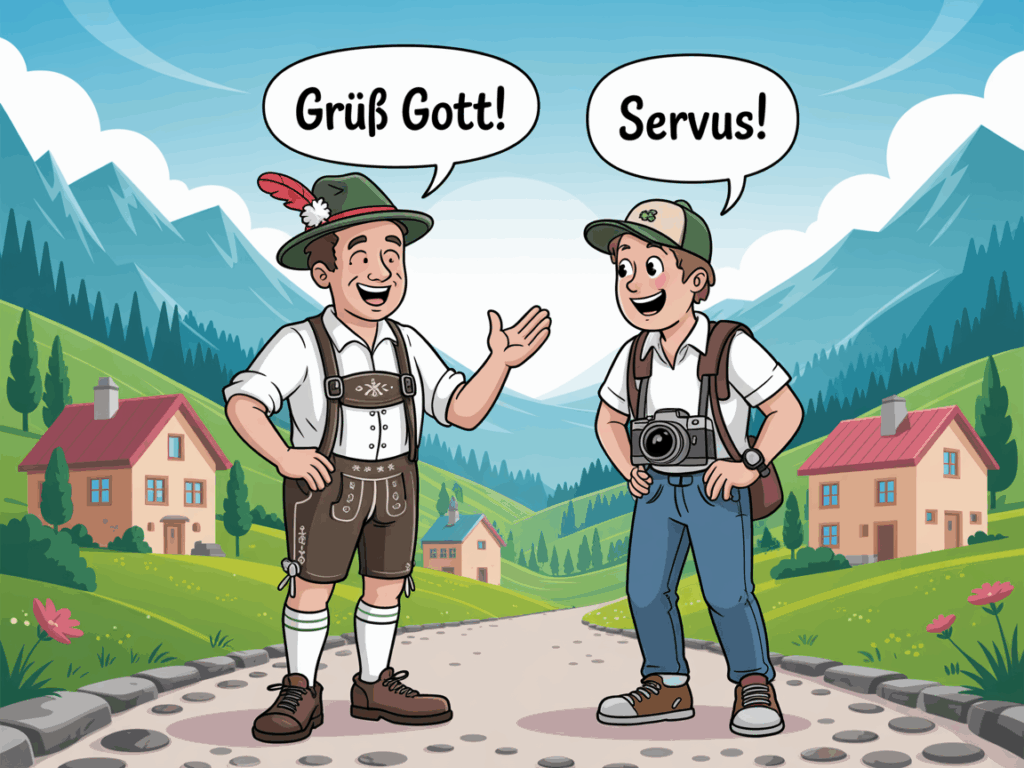
Want to Sound More Austrian?
Learning German is helpful in Austria — but speaking Austrian German (Österreichisches Deutsch) is a whole different story. The dialect has its own rhythm, slang, and expressions that even fluent German speakers sometimes struggle with.
The books below are a fun and helpful addition to any German learner’s collection. Whether you’re brushing up or starting fresh, they’ll give you a playful, practical way to connect more deeply with the language as it’s really spoken in Austria.
Handbook for the Austrian Dialect and Your First Steps in Austria
As a Swiss German speaker, I understand this regional-language nuance very well. And that’s exactly why I recommend this book—over more generic “German” books—for anyone interested in understanding Austria’s linguistic charm.
Speak Austrian: Handbook for the Austrian Dialect and Your First Steps in Austria
This is not your average dry grammar book. Speak Austrian breaks down how people actually talk in Austria—from regional pronunciation quirks to everyday phrases you won’t find in a classroom. It’s practical, straightforward, and designed to help you feel more at home from day one. If you’re curious about how to go from textbook German to Wiener Schmäh, this is your best first step.
The Secret Rules of Der, Die, Das – German Articles Demystified
BONUS: German Grammar That Finally Makes Sense
Let’s be honest: nothing kills language-learning momentum like struggling with der, die, and das. It’s the classic German headache. I’ve wrestled with it for years, and truly felt like if I could just crack this code, my confidence would come flooding back.
That’s why I got so excited when I found this book:
The Secret Rules of Der, Die, Das – German Articles Demystified
This isn’t just another grammar guide. It’s a brilliantly nerdy, surprisingly fun deep-dive into how German noun genders actually work. Based on real stats (like “93% of nouns ending in -or are masculine”) and illustrated with quirky characters—including a three-eared rabbit named Dr. Jürgen Hase—it turns something frustrating into something memorable.
If you’re a pattern-loving learner or someone who’s been stuck guessing for years, this book is a must. It doesn’t just teach rules—it gives you tools. And trust me, it’s a total confidence boost.
If you just want to learn a few words, we got that covered below:
Servus! – A friendly greeting (hello or goodbye)
Grüß Gott! – “God greet you” (a traditional hello)
Danke – Thank you
Bitte – Please / You’re welcome
Kaffee, bitte! – Coffee, please!
Ich hätte gern einen Apfelstrudel – I’d like an apple strudel
Embracing Gemütlichkeit: The Austrian Art of Cozy Belonging
And once you start tuning your ear to the language, you might also begin noticing something else. Not just the words Austrians say, but how they live. The mood. The pace. The spaces that invite you to slow down and stay awhile…
Imagine you’re sitting in a wood-paneled Stube somewhere in the Austrian Alps. The walls are carved with quiet detail, and the shelves are lined with books that look like they’ve lived there for generations. A wool throw rests across your lap, still carrying the crisp scent of mountain air. In your hands you hold a familiar ceramic mug filled with something herbal, floral, steaming. A candle flickers low on the table beside you, its scent mingling with the sweetness of baked apples and the soft curl of woodsmoke rising from a nearby tiled Kachelofen. Outside, there might be snow. Or maybe just mist, rolling down from the hills.
Inside, it’s still. Soft. Warm. You’re not rushing anywhere. Time feels like it’s stretching itself just for you.
This is Gemütlichkeit — one of Austria’s most beloved feelings. Hard to translate, but unmistakable once you’ve felt it. It’s not just “coziness.” It’s a kind of contented slowness. Comfort with depth. It’s what makes you exhale when you walk into the right space — not because it looks like a magazine spread, but because it settles your nerves and softens your breath in a way only comfort can.
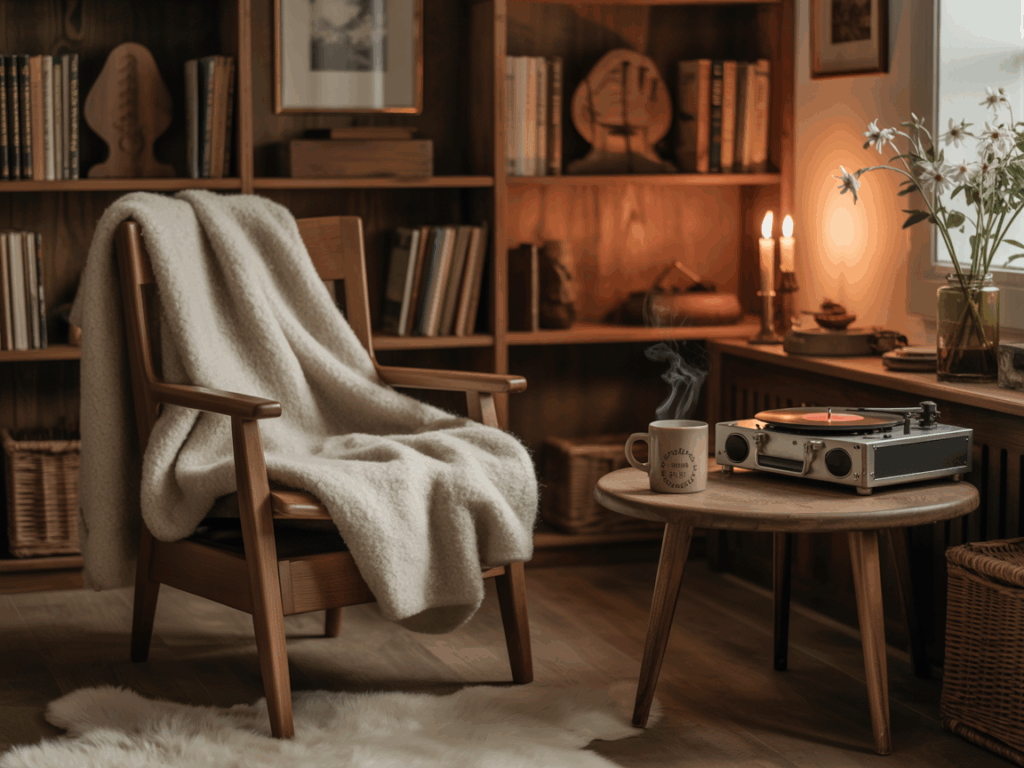
Creating Your Own Gemütlichkeit: A Space to Settle In
You don’t need much. Just a corner — a room, a chair, a window seat — where your shoulders drop and your breath slows. Look around your home. What spot could become your own cozy retreat? What would make it feel more like you?
Start with what you already have. A soft blanket. A chair no one else uses. A lamp you love at dusk. Gemütlichkeit doesn’t require new things — just intentional ones.
Much of what you need is already here — scattered throughout this post. A book from the reading list. A folk tune from the music section. A flower, a photo, a craft. These aren’t just cultural notes; they’re pieces you can live with. Play a vinyl record. Brew Austrian herbal tea. Let this space grow into your cozy retreat.
If the idea of transforming a space feels too big, start small. Add one thing each month. There are eight categories below — by years’ end you’ll have a space that offers the same ease and comfort Austrians call Gemütlichkeit.
Soft Lighting
Think: warm glows, flickering candles, a lamp that makes shadows feel cozy instead of cold.
Check out these ideas for inspo:
Comforting Textures
Wool blankets, sheepskin throws, heavy-knit pillows — things you reach for on instinct.
Check out these ideas for inspo:
- Genuine sheepskin fur
- Muslin cotton throw blanket
- Cotton waffle weave blanket
- Cotton cable knit throw blanket
- Chunky chenille throw blanket
- Warm thick washable merino wool blanket throw
- Classic wool throw blanket in worsted soft Irish wool
- Pure cashmere sofa blanket in camel tartan
- Vintage linen round throw pillow with beige daisy pattern
- Wool felt and cotton floral throw pillow
- Wool and cotton daisy hook throw pillow
- Classy velvet and gold Viennese throw pillow cover
- Teddy wool pillow covers – the next best thing to cuddling stuffies
A Warm Mug in Your Hands
The right mug matters more than we admit. Bonus points for herbal teas, glühwein, or Austrian coffee blends in your cup.
Check out these ideas for inspo:
Scent That Grounds You
Woodsmoke, apple strudel, pine, or anything that reminds you of cabins and quiet walks.
Check out these ideas for inspo:
Sound That Fills the Room Gently
A vinyl record, a playlist of Austrian folk or classical music, or just the soft hiss of a kettle.
Check out my section above about music that can transport you back to Austria and pick something from the genre that relaxes you. Consider a vinyl of your favorite tune.
Something to Read, Write, or Hold
A beautiful journal, a favorite book, a stack of postcards or letters — tactile things that invite presence.
Consider one of the books in the section above, or perhaps pick up a beautiful journal or purposeful read, that helps transition your mind into a more relaxing state.
Consider spending a season unwinding with one of these beautiful coloring books:
Read one of these books meant to help you relax:
Relax and Be Aware: Mindfulness Meditations for Clarity, Confidence, and Wisdom
Or, spend some time reflecting with one of these:
Natural Touches
A bundle of herbs in a jar, an evergreen branch, a pinecone or stone collected on a walk. Simple and grounding. Look to nature for decor and bring a little bit of the outside inside, the next time you go for a walk.
Check out these ideas for inspo:
- Edelweis flower art print
- Place some faux branches or faux greenery in a heavy ceramic vase
- Fill a vase or bowl with some natural pine cones or opt for pinecone bookends
- Fill some small clear glass jars with colorful dried herbs
Something Handcrafted
Whether it’s a piece of pottery, a carved candle holder, or an embroidered pillow — something made with intention, even if not by you.
If you are crafty, consider making something with pressed flowers that helps elevate your space with a natural touch. You can press your own flowers using a flower press, or buy some already pressed flowers like these and these, and create an original display in a glass floating frame. Or, you could buy one and hang it in your cozy space.
Etsy has lots of crafts and craft kits that are sure to add a handcrafted feel to your space.
Create a Space Where Your Nervous System Can Rest
And while Gemütlichkeit might seem like just a cultural detail — a charming piece of Austrian life — it carries deeper value than we often realize. Spaces that feel warm, familiar, and safe don’t just comfort us emotionally; they signal to the body that it can slow down. In Austria, this is baked into the lifestyle: long meals, soft lighting, time spent in nature or simply doing nothing without guilt. These moments activate calm, reduce stress, support deeper breathing, and gently bring us back into our bodies. Whether it’s sitting under a blanket with a good book or sharing dessert by candlelight, we’re not just creating atmosphere — we’re giving our nervous systems a chance to rest. And that kind of rest is where healing, clarity, and connection often begin.
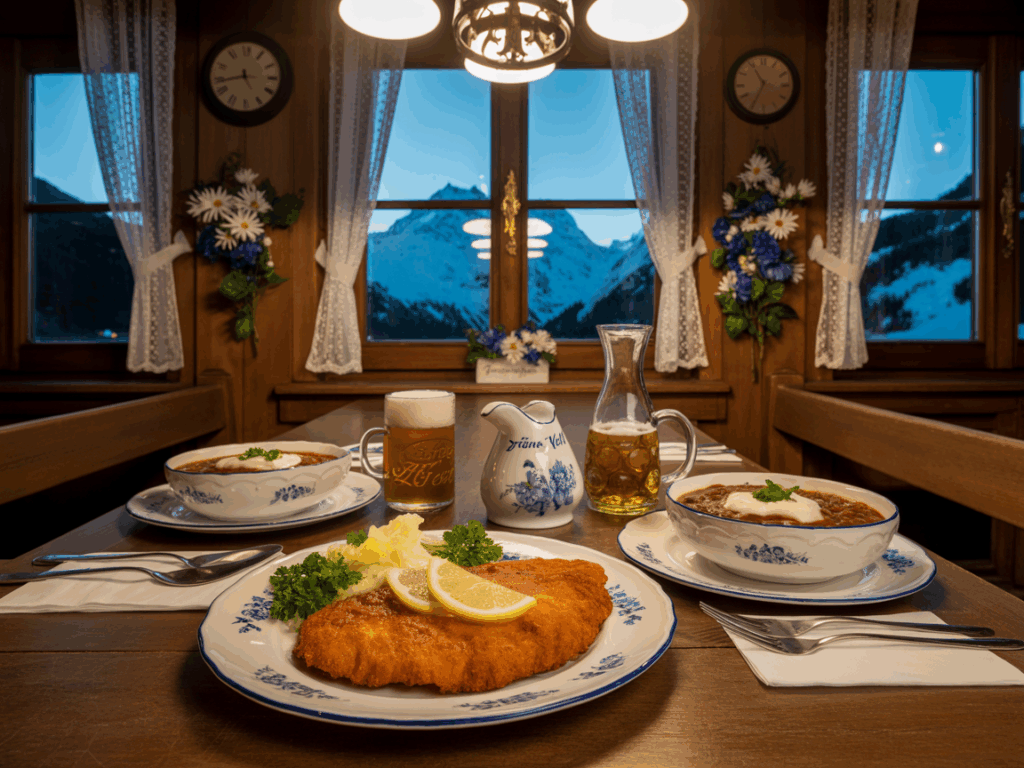
Taste Your Way to Austria
Smell and taste are powerful ways to travel. A crackling pan of schnitzel. The scent of apricot jam melting into chocolate glaze. The cloud-like softness of Kaiserschmarrn. These aren’t just meals — they’re moments.
For those who love the kitchen (or even sometimes love it), cooking is one of the richest ways to connect with a place. It invites you to slow down, get your hands into something meaningful, and savor the process.
It’s also a way to share Austria through the joy of preparing something new or simply gathering around the table. You might even stumble into a new favorite dish… or the start of a family tradition.
Below are three of Austria’s most beloved classics to bring that connection home.
Three Iconic Recipes to Try at Home
Wiener Schnitzel
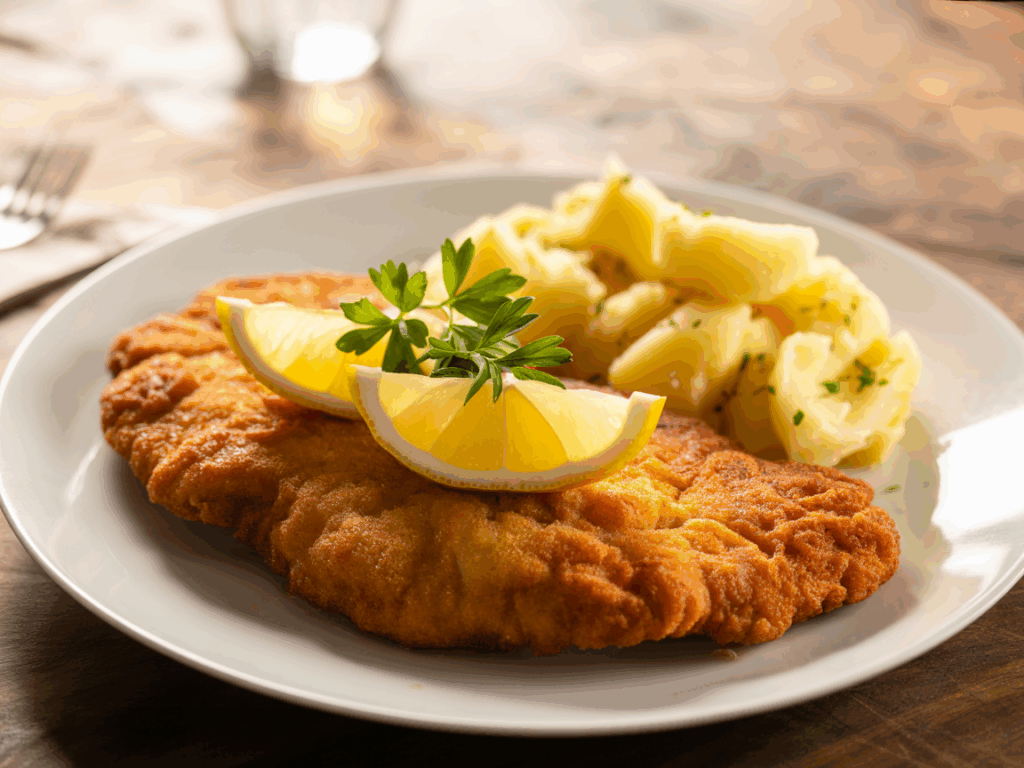
Classic Wiener Schnitzel Recipe (Serves 4)
Ingredients:
4 veal cutlets (about 5 oz each, or ~140g)
(Substitute: pork loin or chicken breast, pounded thin)Salt & pepper, to taste
1/2 cup (60g) flour
2 large eggs
1 cup (100g) breadcrumbs (not panko — use finely ground, plain)
Butter & neutral oil (like canola or sunflower) — for frying
Lemon wedges – for serving
Optional garnish: parsley sprigs
Instructions:
Prepare the meat
Pound veal cutlets gently until they are about 1/4 inch (6mm) thick. Season lightly with salt and pepper on both sides.Set up your breading station
Place flour on one plate.
Beat eggs in a shallow bowl.
Place breadcrumbs on a third plate.
(Tip: don’t press the breadcrumbs into the meat — a light coating gives it that signature puff!)
Bread the schnitzel
Dredge each cutlet first in flour (shake off excess), then dip into beaten eggs, then gently coat with breadcrumbs. Place on a wire rack or plate while you finish the rest.Fry until golden
Heat a mix of butter and oil in a large pan (enough to generously coat the bottom — about 1/4 inch deep). The oil should be hot but not smoking (~340°F or 170°C). Fry each schnitzel for about 2–3 minutes per side, gently shaking the pan so hot oil bubbles around the edges. Flip once, until golden and crisp.Drain and serve
Remove to a paper towel-lined plate. Serve immediately with lemon wedges and garnish with parsley.
Traditional Sides:
Petersilienkartoffeln (parsley potatoes)
Gurkensalat (Austrian cucumber salad)
Lingonberry sauce (optional, but delicious)
Sachertorte
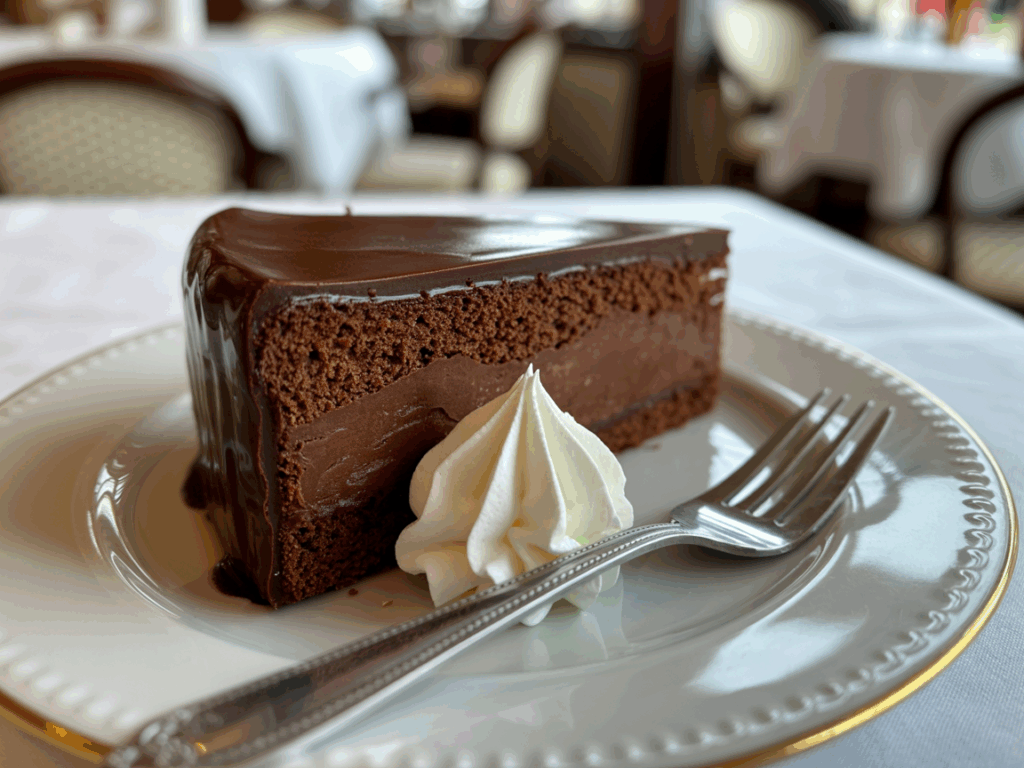
Classic Viennese Sachertorte
Elegant, dense, and not overly sweet — just like in a Viennese café.
Ingredients:
For the cake:
5 oz (140 g) dark chocolate (around 55–60% cocoa)
9 tbsp (130 g) unsalted butter, room temp
1 cup (130 g) powdered sugar
6 large eggs, separated
1 tsp vanilla extract
1 cup (130 g) all-purpose flour
Pinch of salt
For filling:
1/2 cup (160 g) smooth apricot jam, gently warmed and strained
For the glaze:
5 oz (140 g) dark chocolate
1/2 cup (100 g) granulated sugar
1/3 cup (80 ml) water
Instructions:
1. Preheat & prep
Preheat oven to 350°F (175°C). Grease and line a 9-inch (23 cm) springform pan.
2. Melt chocolate
Melt chocolate over a double boiler or in short bursts in the microwave. Let it cool slightly.
3. Make the batter
Cream butter and powdered sugar until light and fluffy.
Add egg yolks one at a time, then stir in vanilla and the melted chocolate.
In a separate bowl, beat egg whites with a pinch of salt until they form stiff peaks.
Fold about 1/3 of the whites into the chocolate mixture to loosen it, then gently fold in the rest.
Sift in the flour and fold until just combined.
4. Bake
Pour batter into the prepared pan and bake for 45–50 minutes, or until a toothpick comes out clean.
Cool completely on a wire rack.
5. Fill with apricot jam
Slice the cake horizontally into two layers.
Spread apricot jam on the bottom layer, place the top back on, then spread a thin layer over the top and sides too. Let it set while you make the glaze.
6. Make chocolate glaze
In a small saucepan, bring sugar and water to a boil for 3–4 minutes until syrupy.
Remove from heat and whisk in the chocolate until smooth and glossy.
Pour glaze over the cake, letting it drip evenly over the sides. Use a spatula to smooth if needed.
7. Cool & serve
Let it set completely at room temp. Serve with unsweetened whipped cream — as is Viennese tradition.
Best served with:
A hot cup of Austrian coffee
A side of Gemütlichkeit
Kaiserschmarrn
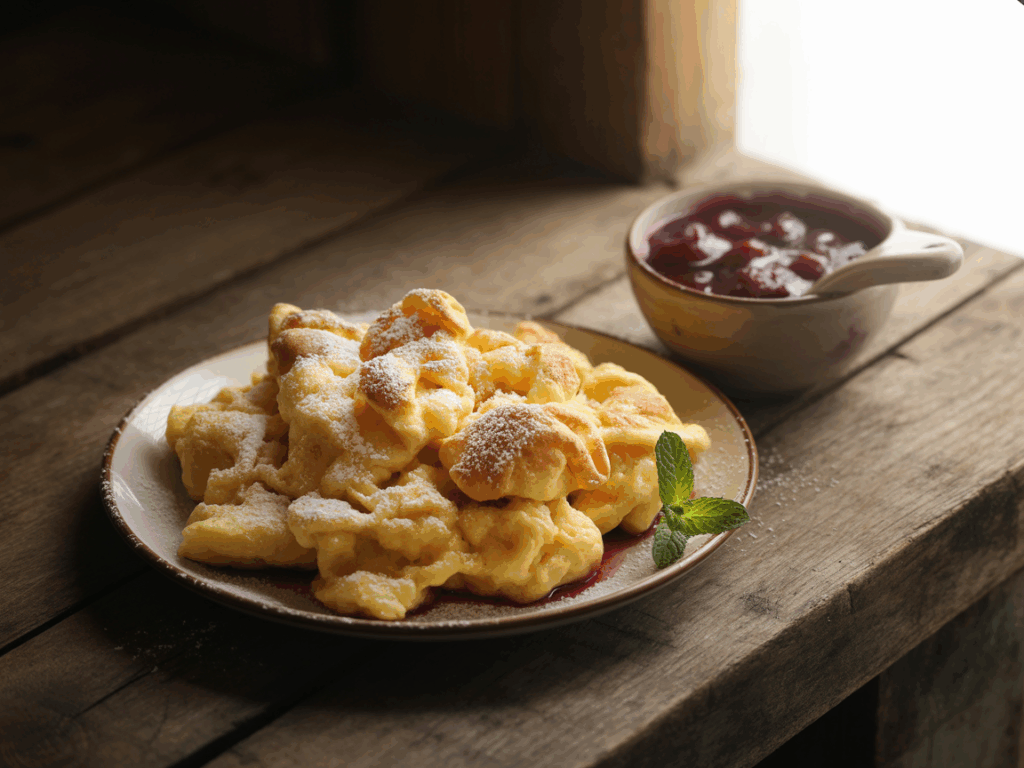
Classic Kaiserschmarrn (Emperor’s Pancake)
Fluffy, caramelized, and perfect for sharing — just like in an Austrian alpine hut.
Ingredients (Serves 2–3):
1 cup (125 g) all-purpose flour
1 cup (240 ml) milk
4 large eggs, separated
2 tbsp (25 g) granulated sugar, divided
1 tsp vanilla extract
1 tbsp unsalted butter (plus more for frying)
Pinch of salt
1–2 tbsp raisins (optional, often soaked in rum or water)
Powdered sugar, for dusting
Plum compote, apple sauce, or berry jam, for serving
Instructions:
1. Make the batter
In a large bowl, whisk together flour, milk, egg yolks, vanilla, and a pinch of salt until smooth.
In a separate bowl, beat the egg whites until soft peaks form. Gradually add 1 tbsp sugar and beat until glossy stiff peaks form.
Gently fold the egg whites into the batter in 2 additions to keep the mixture airy.
2. Cook in a pan
In a large nonstick or cast-iron skillet, melt 1 tbsp butter over medium heat.
Pour in the batter. Sprinkle raisins evenly over the top if using.
Cover and cook for about 4–5 minutes, until the bottom is golden and the top is just set.
3. Tear and finish
Use two forks or a spatula to tear the pancake into rough bite-sized pieces.
Sprinkle with the remaining 1 tbsp sugar and add a small knob of butter.
Continue to cook and toss gently for another 2–3 minutes until the edges are golden and caramelized.
4. Serve warm
Dust generously with powdered sugar.
Serve with Zwetschgenröster (plum compote), apple sauce, or berry jam on the side.
Some Austrian cooks make it in the oven, especially when needing larger serving sizes. If this is you or you want to try this method, a modified recipe follows.
Oven-Baked Kaiserschmarrn (Serves 4–6)
Adjusted Ingredients:
1¼ cups (160 g) all-purpose flour
1¼ cups (300 ml) milk
6 large eggs, separated
3 tbsp (40 g) granulated sugar, divided
1½ tsp vanilla extract
2 tbsp unsalted butter, plus more for greasing
Pinch of salt
2–3 tbsp raisins (optional, soaked in rum or water)
Powdered sugar, for dusting
Plum compote, apple sauce, or jam to serve
Instructions for Baking:
1. Preheat the oven
Preheat to 375°F (190°C). Place a large ovenproof skillet, cast iron pan, or baking dish (about 9×13 inches) inside to heat.
2. Prepare the batter
Same as before: whisk together flour, milk, egg yolks, vanilla, and salt.
Beat the egg whites to stiff peaks with 1½ tbsp sugar, then fold into the batter.
3. Butter the pan
Carefully remove the hot pan and add 2 tbsp butter — swirl to coat the bottom.
Pour in the batter and sprinkle raisins on top if using.
4. Bake
Place in the oven and bake for 18–22 minutes, or until puffed and golden on top.
5. Tear and finish
Remove from the oven and use forks or spatulas to tear into rough pieces.
Optionally, sprinkle with the remaining 1½ tbsp sugar and return to the oven for 5 more minutes to caramelize the edges.
6. Serve immediately
Dust with powdered sugar and serve warm with fruit compote.
Bonus Tip:
This version stays fluffier and more soufflé-like. You can even pre-cut and place it back under the broiler for 1–2 minutes for crispier tops — just watch closely!
If these spark curiosity for more, you might consider something deeper:
a cookbook that captures Austria’s full culinary heart.
Not just the postcard-famous dishes, but the soups, spreads, veggie plates, and sweet little surprises that make up everyday Austrian life.
For the Love of Austria
by Christian J. Fischer
If you want your Austrian cooking to feel like it came from someone’s home kitchen — full of warmth, ease, and stories — this is the book. Chef Christian J. Fischer, who was born and raised in Austria, offers more than just recipes here. He offers memories. These are the meals he grew up with, the flavors that shaped his love for food, and the dishes he now passes on — not as museum pieces, but as joyful, everyday traditions.
Why you’ll love it:
It’s unfussy and heartfelt — ideal for home cooks who want food that’s deeply rooted but easy to enjoy.
There’s a strong sense of family and ritual, from Sunday soups to simple strudels that feel like they came from a handwritten recipe card.
Fischer includes plenty of classic favorites — Wiener Schnitzel, Tafelspitz, Krautfleckerl, and Sachertorte — but also shares lighter options like Red Cabbage Salad and Creamy Garlic Soup.
Each recipe is paired with beautiful photos and simple instructions, making this a comforting guide for beginners and seasoned cooks alike.
This book is a wonderful choice if you’re dreaming of starting a monthly “Austrian Night” at home, or if you just want to cook the kinds of meals that someone’s Austrian grandmother might have made — lovingly, and without a timer.
Austrian Desserts and Pastries
by Dietmar Fercher & Andrea Karrer
For those who light up at the sight of whipped cream, buttery dough, and flaky pastry towers — this book is your invitation to Viennese café heaven. With over 100 classic dessert recipes, master pastry chef Dietmar Fercher brings the full range of Austrian sweets to life: from the well-known (Sachertorte, Gugelhupf, Linzer Torte) to the more delicate and storied creations like Esterhazyschnitten and Schaumrollen.
Why you’ll love it:
It’s a dessert deep dive — perfect for those who want to go beyond Sachertorte and explore Austria’s lesser-known pastries.
Each recipe is paired with gorgeous photography by Konrad Limbeck, making it as inspiring as it is instructional.
There’s a mix of accessible recipes for everyday indulgence and impressive showstoppers for special occasions.
Fercher includes personal notes and historical context, turning this from a recipe book into a journey through Austria’s sweet traditions.
Whether you’re baking to remember a favorite café in Vienna or want to create your own Kaffeehaus moment at home, this cookbook is a treasure. Pair it with a pot of strong coffee and one of your softest table linens, and suddenly, your kitchen is Austria.
Neue Cuisine: The Elegant Tastes of Vienna
by Kurt Gutenbrunner
If you’ve ever dreamed of sitting in a grand Viennese café surrounded by art, history, and the delicate clink of fine cutlery — this is the book to bring that feeling home. Chef Kurt Gutenbrunner, known for his acclaimed New York restaurants (Café Sabarsky, Wallse, Blaue Gans), brings together Austria’s rich culinary tradition with a modern, thoughtful touch.
Why you’ll love it:
It’s part cookbook, part cultural tribute — with over 100 recipes that blend classical dishes like apple strudel and Wiener Schnitzel with lighter, elegant creations like pea soup with pineapple mint or lobster with cherries and Béarnaise.
The book is visually striking, photographed with art and tabletop pieces from Vienna’s turn-of-the-century golden age, echoing the café culture that made the city a creative capital.
It celebrates seasonality and refinement, perfect for home cooks who love to entertain or who enjoy the artistry of food as much as the taste.
This is Austria with candlelight and a pianist in the background — not because it’s fussy, but because it’s intentional. If you want your kitchen to feel like a quiet café in Vienna’s Museum Quarter, this is your guide.
Österreich Kochbuch
by Isabella Huber
This German-language cookbook is a feast of familiarity and discovery, offering over 100 recipes that span Austria’s full range — from rustic mountain fare to elegant café sweets. Whether you’re craving a cozy Kaiserschmarrn, curious about regional fish dishes, or want to recreate a Brotzeit spread with Liptauer and crusty rolls, this book delivers.
Why you’ll love it:
It’s accessible, even for everyday cooks — using local, affordable ingredients and simple, clear steps.
It blends old-world charm with modern versatility: from hearty meat dishes to lighter vegetarian options and alpine-inspired desserts.
It’s deeply cultural, celebrating Austria’s diverse influences — from Hungarian to Bohemian to Dalmatian — woven into the cuisine.
And it’s perfect for creating an “Austrian night” at home — whether once a week in anticipation of a trip, or as a way to revisit memories long after you’ve returned.
Whether you’re here for the sweet endings or the savory beginnings, this book helps you bring a bit of Austria’s flavor into your everyday — one cozy, delicious meal at a time.
Quick Culinary Tastes
Not everyone can or wants to cook or bake stuff themselves. Here’s a curated list of Austrian treats—ranging from sweet to savory—that you can order in the U.S. to recreate that cozy, Alpine ambiance. All the tastes without the work.
Austrian Cookies & Pastries
Linzer Cookies: Delicate almond-based cookies filled with raspberry jam. Available from specialty bakeries like the Vienna Cookie Company.
Manner Wafers: Iconic hazelnut cream-filled wafers in pink packaging. Widely available online and in international sections of grocery stores. Available online: Manner.
Chocolates & Sweets
Mozartkugeln: Chocolate balls filled with pistachio marzipan and nougat. Brands like Mirabell and Reber offer these confections. From Amazon.
Zotter Chocolates: Organic, fair-trade chocolates with unique flavors like apricot and pumpkin seeds. Available at From Austria.
Casali Rum-Kokos: Chocolate-covered coconut candies with a hint of rum. From the Austrian Supermarket.
Savory Snacks & Condiments
Drinks
Coffee (Kaffee)
Coffee culture in Austria is a ritual, not just a caffeine fix. Here are a few ways to bring it home:
Viennese-style coffee beans – Look for dark-roasted, smooth blends from brands like Meinl, Eduscho, or Tchibo (often labeled Wiener Röstung or Melange blends).
Instant Wiener Melange – A sweetened instant version of Austria’s signature café drink — somewhere between a cappuccino and a latte that you can throw together with this recipe.
Coffee accessories – A proper Mokka pot (love this stainless steel one with oak wood handle from Waldwerk!), demitasse cups (or these wood rimmed ones, or these stackable ones), and maybe even a gold-trimmed cup and saucer for the most indulging moments.
Teas (Tee)
Austrians love herbal teas — many locally foraged or Alpine-sourced.
Alpine herb blends – Think linden blossoms, mint, chamomile, sage, and elderflower.
Kräutertee (herbal tea) – Widely consumed in winter, often for health and comfort. Available from Amazon.
Rosehip & fruit teas – Tart and warming, often paired with honey.
Other Sippable Staples
Almdudler – Austria’s national soft drink: a sparkling herbal lemonade (available from Amazon). Or also in Haribo candy form.
Stroh Rum – Iconic Austrian spiced rum (great for baking or winter punch).
Pumpkin Seed Oil – Yes, technically a condiment, but Austrians sometimes drizzle it over vanilla ice cream or mix it into yogurt for a nutty twist. Get some from Austria via Amazon.
Austrian Spices and Herbs
Kotányi, founded in 1881, is Austria’s go-to brand for herbs, spice blends, and seasonings. Here are the most commonly used herbs in Austrian kitchens:
Common Austrian Herbs
Parsley (Petersilie) – Fresh, flat-leaf preferred for soups, potatoes, and salads.
Chives (Schnittlauch) – For spreads like Liptauer and egg-based dishes.
Dill (Dillkraut) – Often paired with cucumbers or fish.
Marjoram (Majoran) – Key in meat dishes and sausages.
Lovage (Liebstöckel) – Adds deep flavor to broths and soups.
Bay leaf (Lorbeerblatt) – Essential in stews and roasts.
Warming Spices
Caraway (Kümmel) – For breads, cabbage, and potato dishes.
Nutmeg (Muskatnuss) – A dash goes into creamy spinach, potato dumplings, and sauces.
Paprika (Paprikapulver) – Mild or sweet Hungarian-style paprika for meats and goulash.
Cinnamon & Clove – Used frequently in desserts and fruit compotes.
Many of these are available through Kotányi’s international distributors, or in specialty European sections of Amazon. Or, grab some at your local supermarket from whatever brand is available.
Where to Shop
From Austria: Offers a broad selection of Austrian snacks, chocolates, and condiments.
Piccantino: Features a variety of Austrian culinary products, including sweets and savory items.
Amazon: Provides a range of Austrian goods, from chocolates to beverages.
Vienna Cookie Company: Specializes in traditional Austrian cookies and pastries.
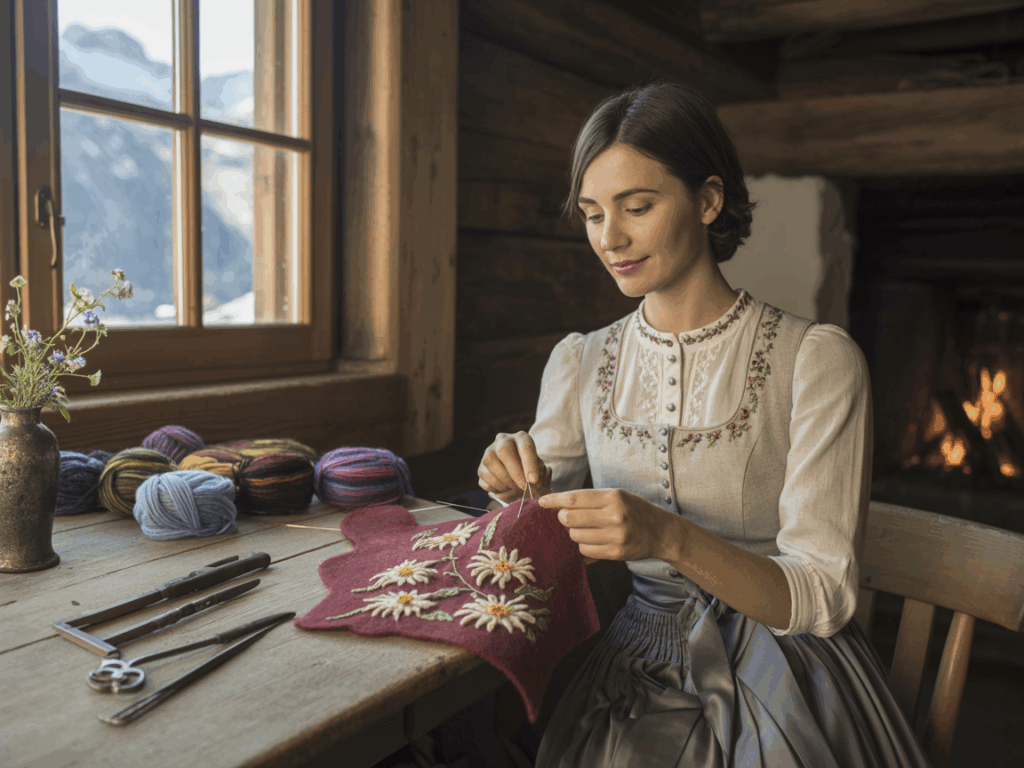
Get Crafty: Austrian-Inspired DIY Projects
If you like to connect with a place through your hands, Austria has some cozy, beautiful traditions you can try from home.
Etsy has sellers offering Austrian craft kits or patterns.
- Or, look at Pinterest for inspiration!
Edelweiss-Inspired Crafts
Make felt or paper edelweiss flowers
Add to a travel journal, garland, or gift topper
Use white and yellow wool or simple templates
Alpine-Inspired Candle Holders or Decor
Paint or decorate wooden candle holders with folk motifs (like hearts, florals, or traditional Austrian patterns)
Add rustic twine, dried herbs, or a bit of plaid for a Tyrolean feel
Wool & Felt Crafts
Make mini felt animals (like sheep or deer), wool ornaments, or garlands
Inspired by rural and mountain life
Traditional Christmas Crafts
Paper stars (Fröbelsterne), dried orange garlands, or straw ornaments
Popular in Austrian Advent markets
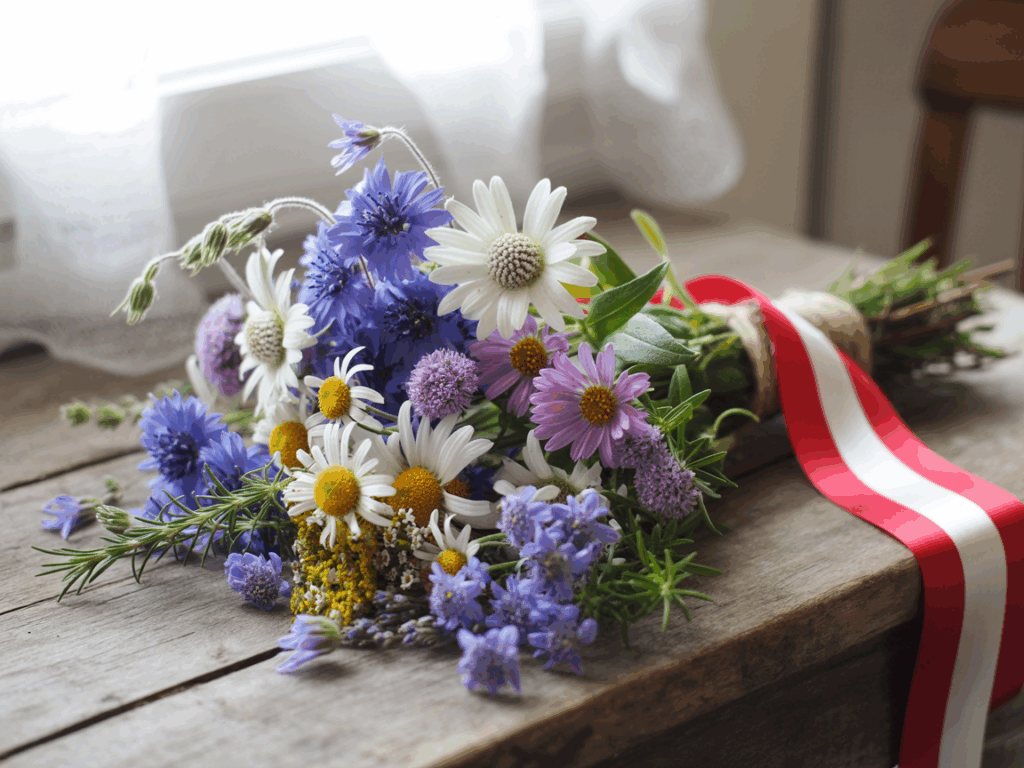
Grow Austria at Home: An Austrian-Inspired Garden Plot
You don’t have to live in the Alps to bring a little Austrian magic into your backyard (or balcony). Creating a garden inspired by Austria’s wildflowers and alpine charm is a beautiful way to feel connected to the landscape — and it can evolve over the seasons.
What to Plant in Your Austrian Garden
Alpine Favorites
These echo the meadows of Tyrol and Salzburg:
Edelweiss – The ultimate Austrian bloom (plant from seed or buy starts; best in rocky soil)
Gentians – Striking deep blue flowers; low-growing and hardy
Bellflowers (Campanula) – Alpine native with lovely purple bells
Arnica – Bright yellow, simple and rustic
Classic Countryside Flowers
Think village gardens and rustic charm:
Sunflowers – Tall, cheerful, and striking in summer
Alpine Asters – Purple-pink daisy-like blooms
Daisies – Simple, sweet, and widely loved in Austrian folk imagery
Herbs & Greenery
Many Austrian gardens mix ornamental and practical plants:
Lavender – For scent and style
Rosemary, thyme, and sage – Rustic kitchen herbs
Juniper or dwarf pine – To mimic Alpine greenery in a corner of your garden
Bonus: Make an Austrian Bouquet from Your Garden
Once your flowers are blooming, gather a small handful to create a rustic Austrian-style bouquet.
How to:
Include a few dried sprigs (lavender, strawflower, or edelweiss if available)
Tie with natural twine or ribbon, ideally in red and white for a nod to the Austrian flag
Display in a simple vase or give as a heartfelt gift — just like you’d find in a mountain village inn or Vienna café
💡 You can also press flowers into a travel journal or memory book to preserve the moment.
Celebrate Like the Austrians: Holidays & Traditions to Try at Home
Want to feel even closer to Austria? Celebrate one of their seasonal holidays or traditions from your own living room. These special occasions bring music, food, craft, and meaning — just the kind of travel magic you can recreate, no matter where you are.
Christmas & Advent Season (Weihnachtszeit)
Austria is known for its magical Christmas markets and warm holiday traditions. Recreate the spirit with:
Advent wreaths (4 candles, one lit each Sunday before Christmas)
Baking Lebkuchen (Austrian gingerbread) or Vanillekipferl (crescent cookies)
Listening to Silent Night, which originated in Austria
Making paper stars or straw ornaments
A DIY Christmas Market night at home with food, music, and crafts
St. Nicholas Day (December 6)
Children leave shoes out for treats from St. Nicholas (and beware the Krampus!)
You could fill slippers with nuts, fruit, or small chocolates
Fun for families, especially if you pair it with storytelling or simple decorations
Easter (Ostern)
Austrians decorate blown-out eggs with paint, straw, or natural dyes
Serve Reindling (a sweet bread) or lamb-shaped cakes
Hide small treats and decorate with spring flowers
Fasching (Carnival Season – February)
A time of costumes, sweets, and parades — similar to Mardi Gras
Make Krapfen (jam-filled doughnuts)
Dress up in silly or traditional costumes
Hold a mini parade or costume dance party at home with Austrian folk music
Austrian National Day (October 26)
Celebrate with traditional food, music, and maybe a cultural documentary
Watch classical performances (the Vienna Philharmonic is a great choice)
Decorate with small Austrian flags or wear red and white
Reflect on Austrian history or plan a virtual museum tour
Where Curiosity Leads
This list isn’t complete — and it’s not meant to be. There are so many other ways to keep exploring: Austrian board games, local brands, podcasts, traditions, etc. One step leads to the next.
Think of this not as a finish line, but a starting point. A doorway into culture, memory, and imagination — whether you’re planning your first trip, reliving a past one, or simply learning more about a place that’s captured your heart.
Let your curiosity wander. See where it takes you. Austria will be there — in your books, in your kitchen, in the corner of your home that makes you breathe a little easier.

